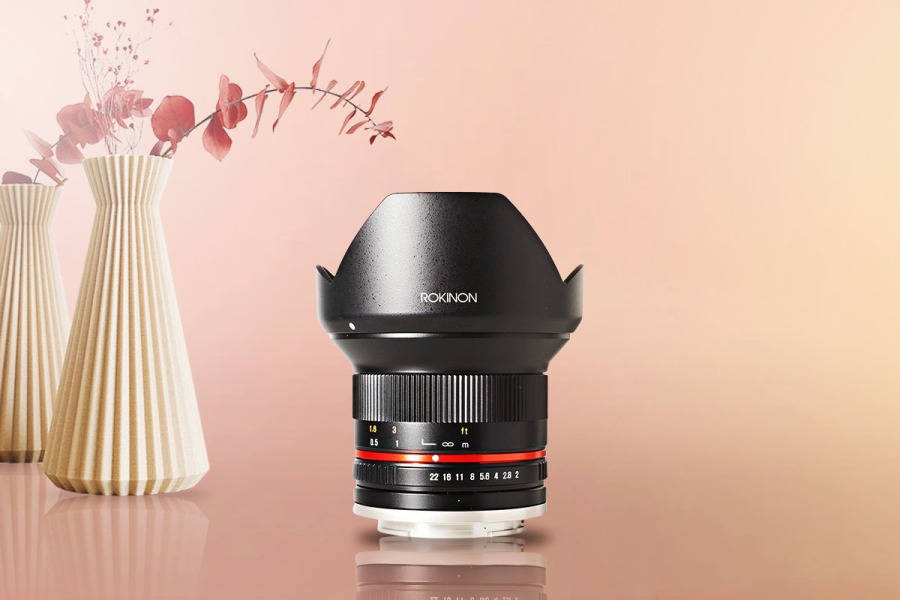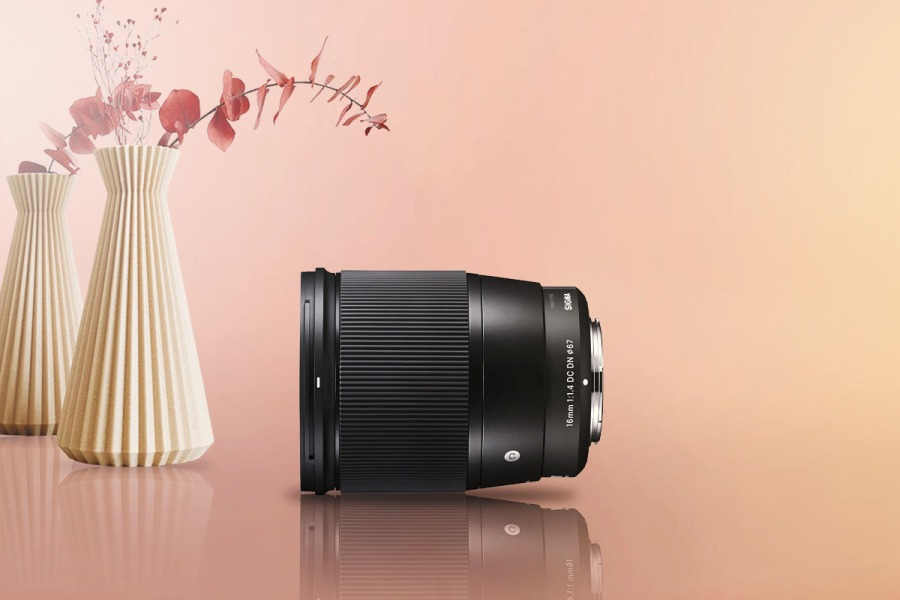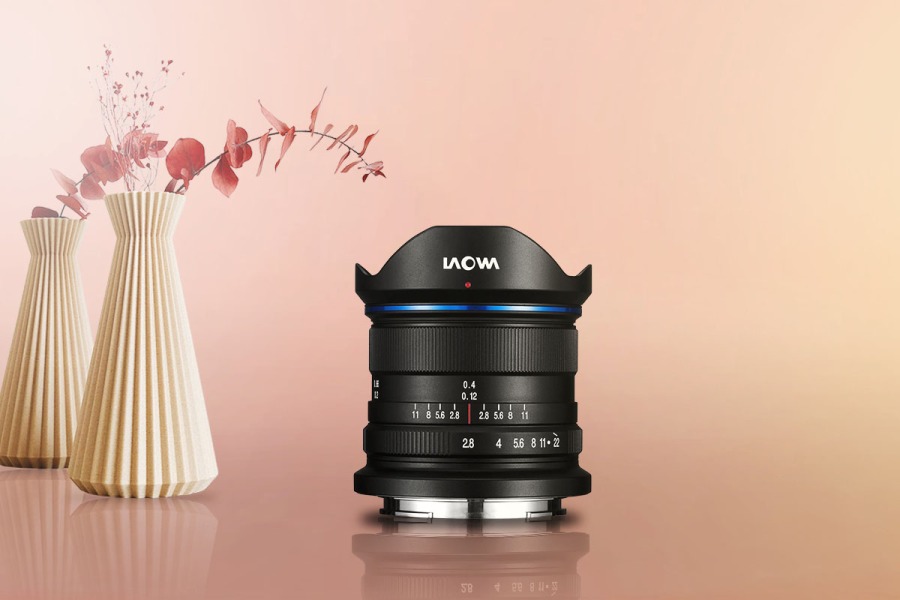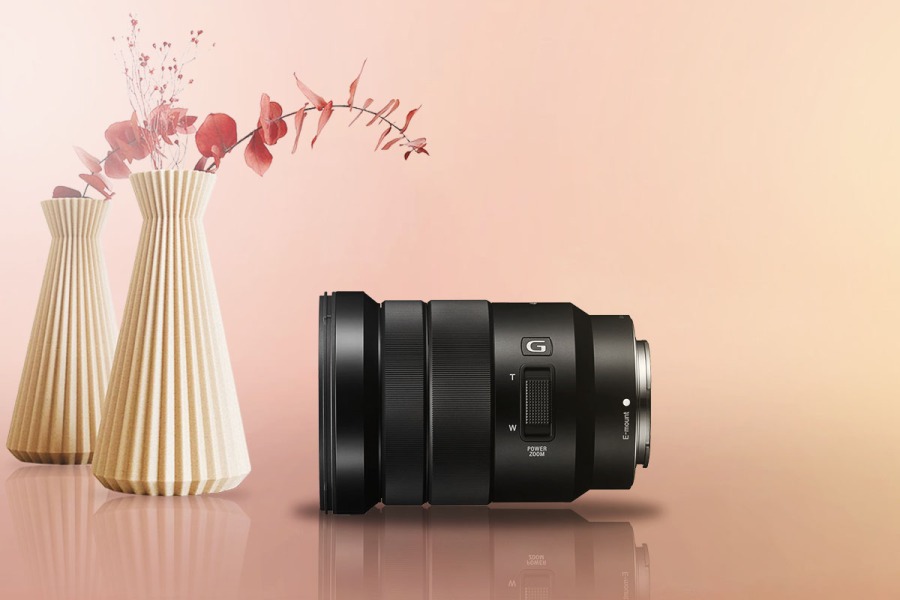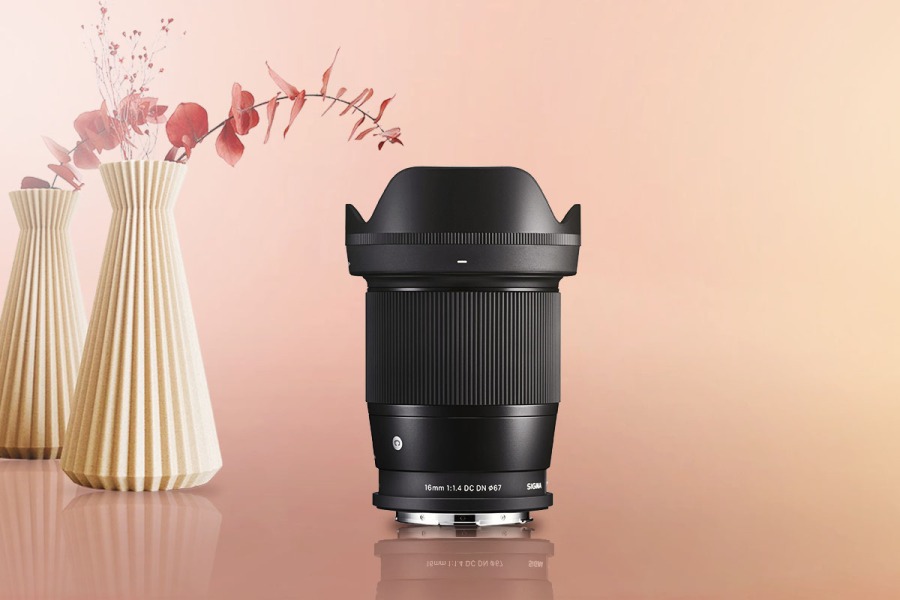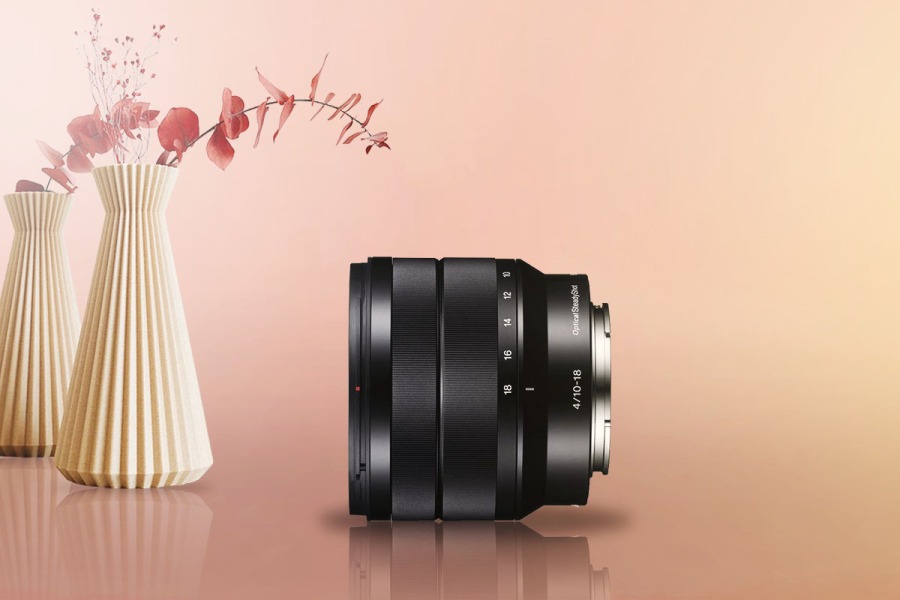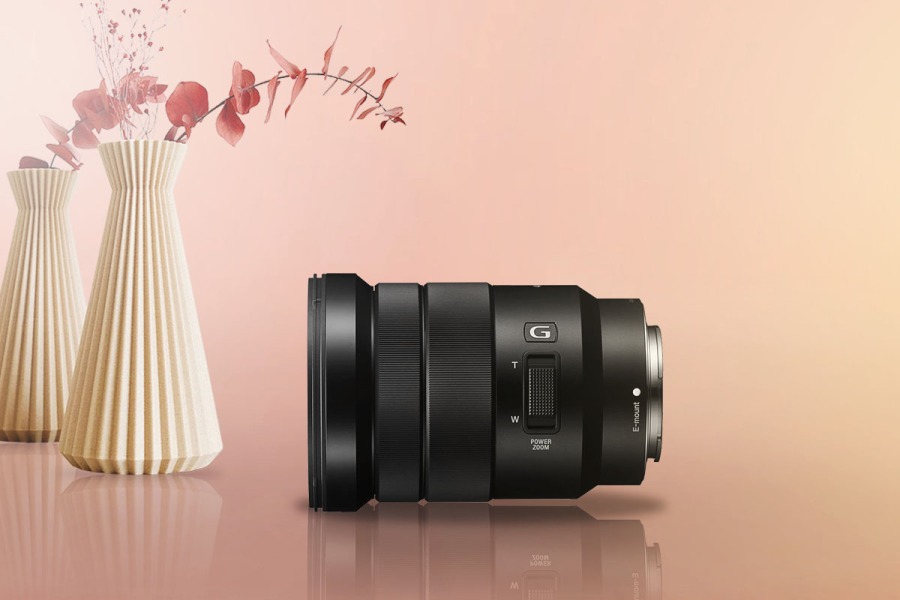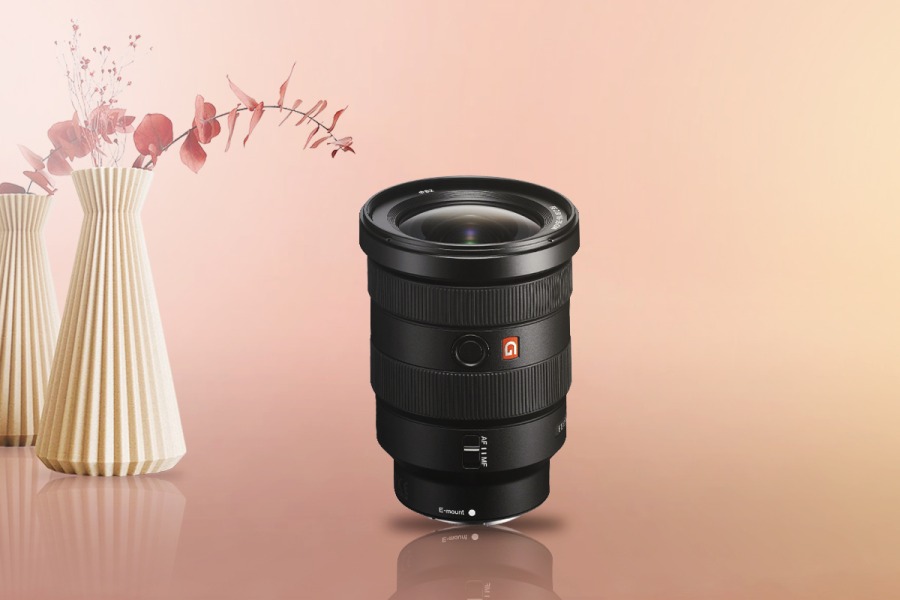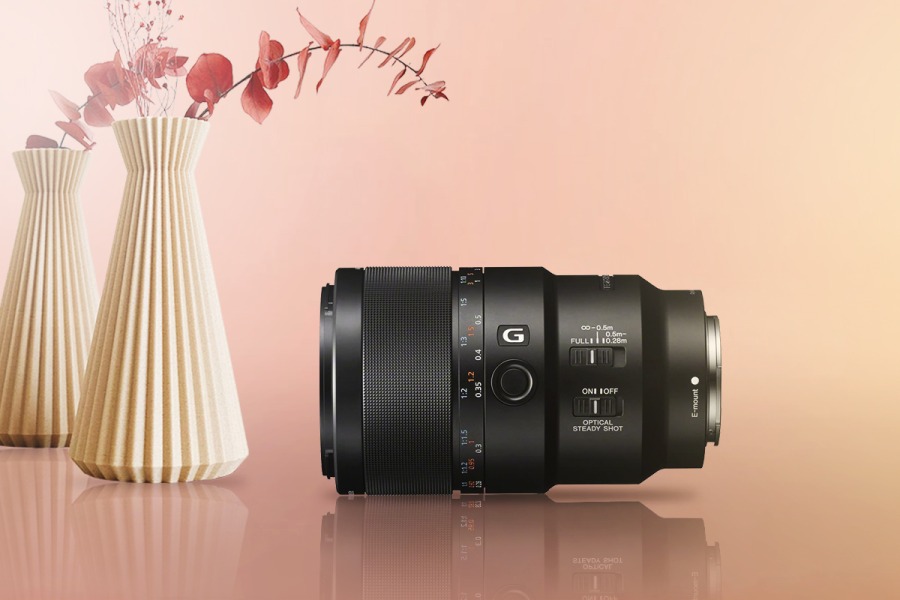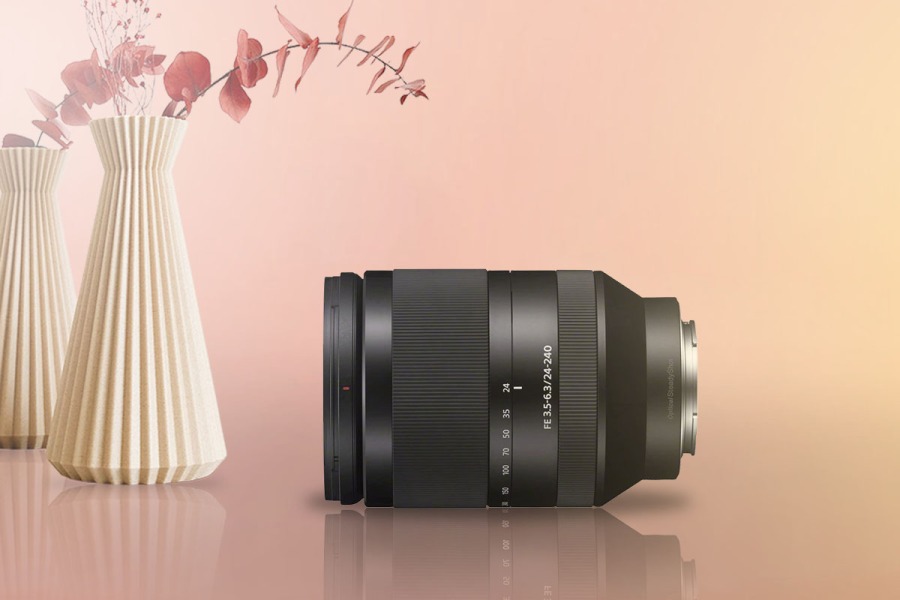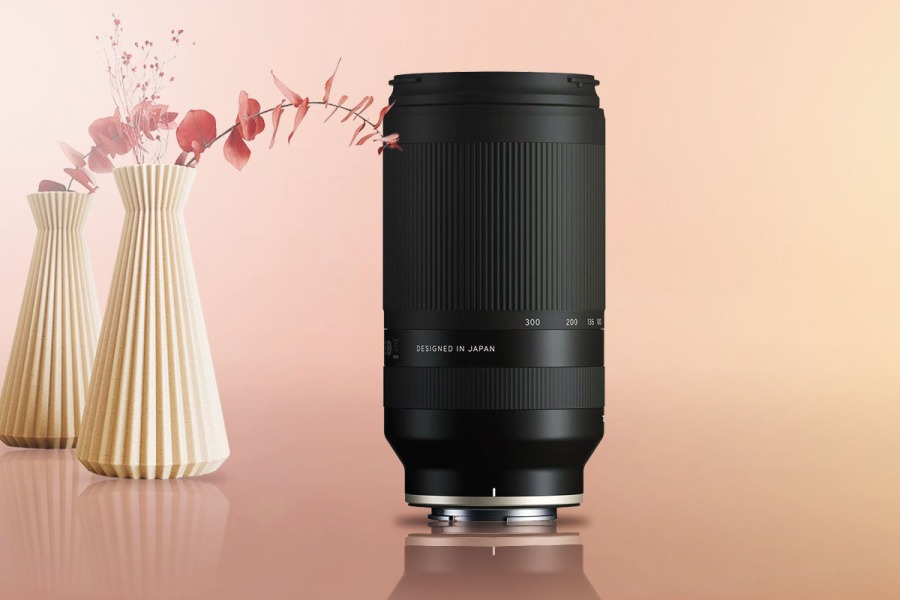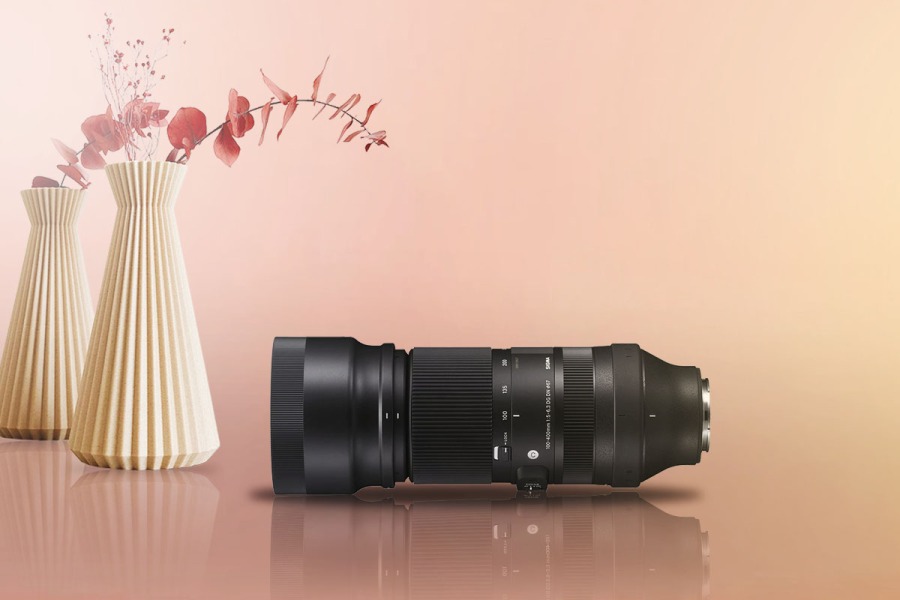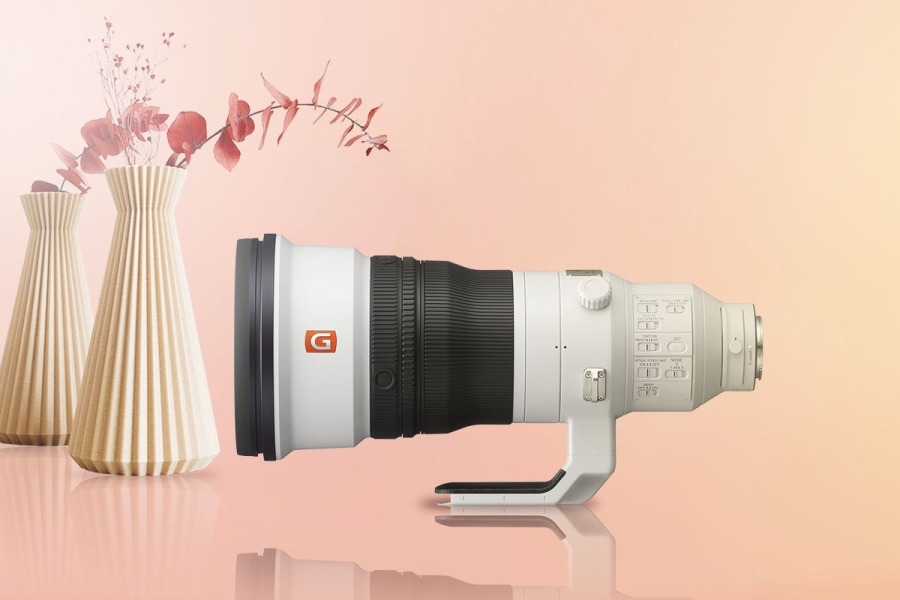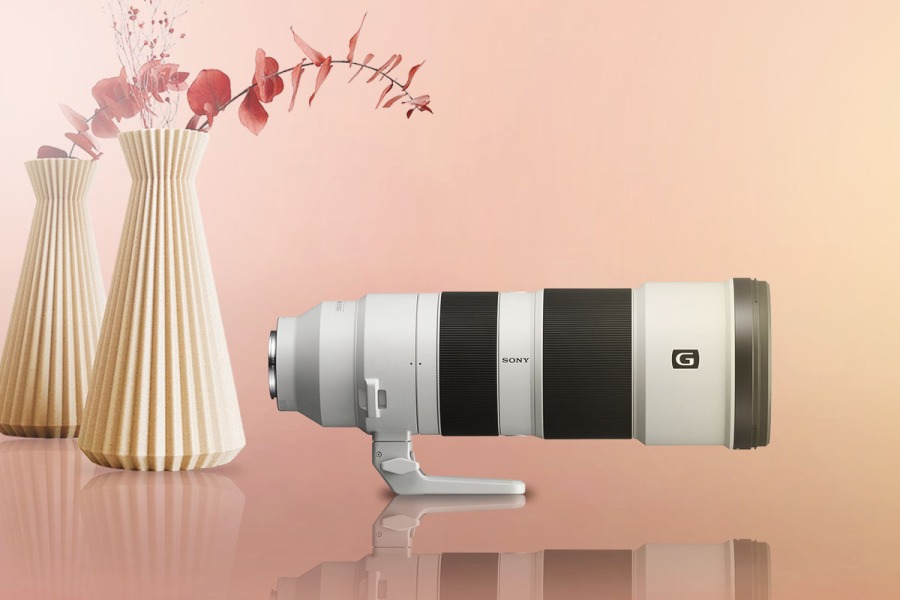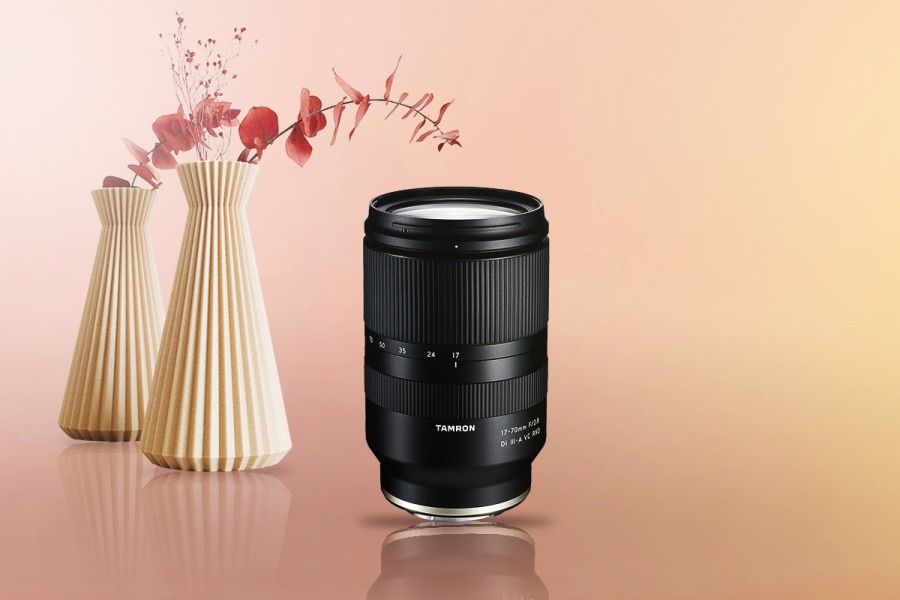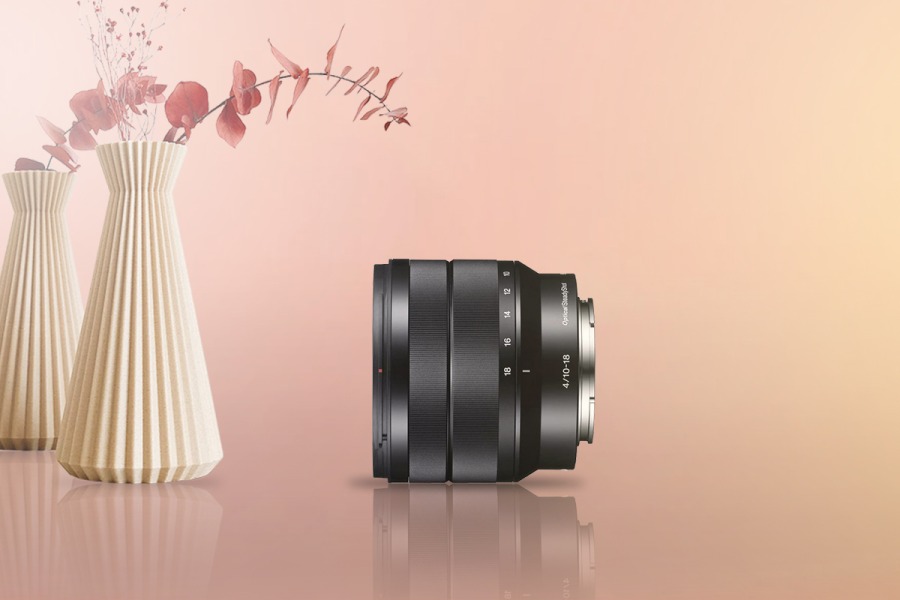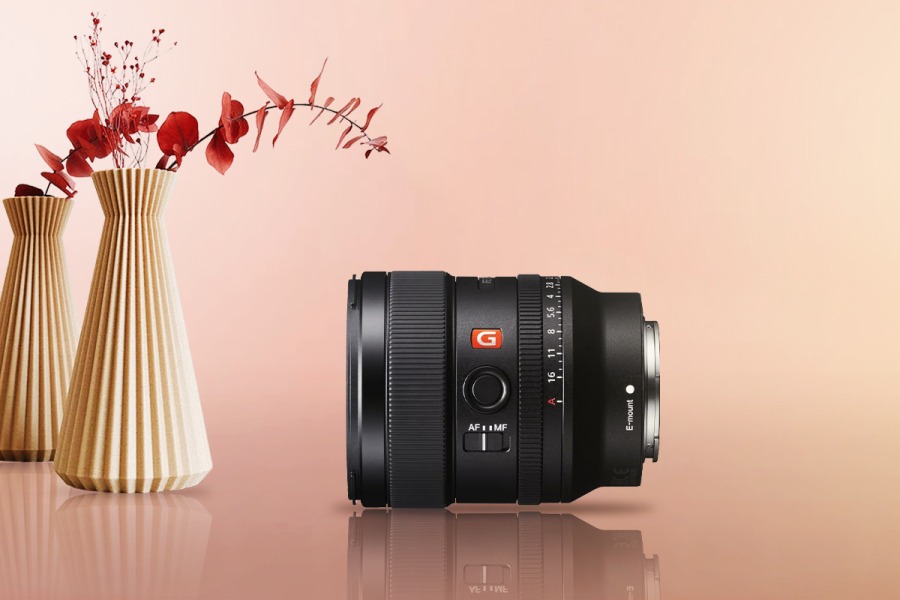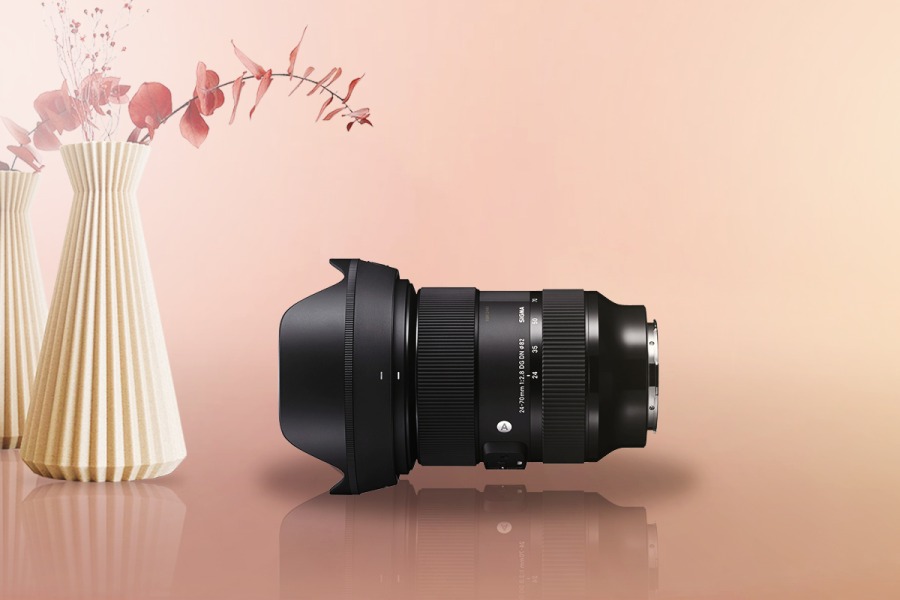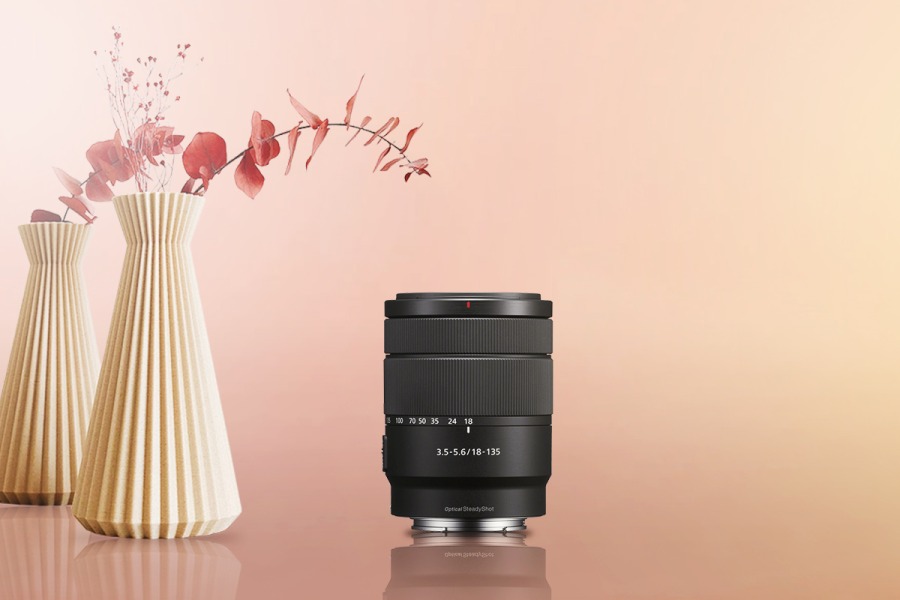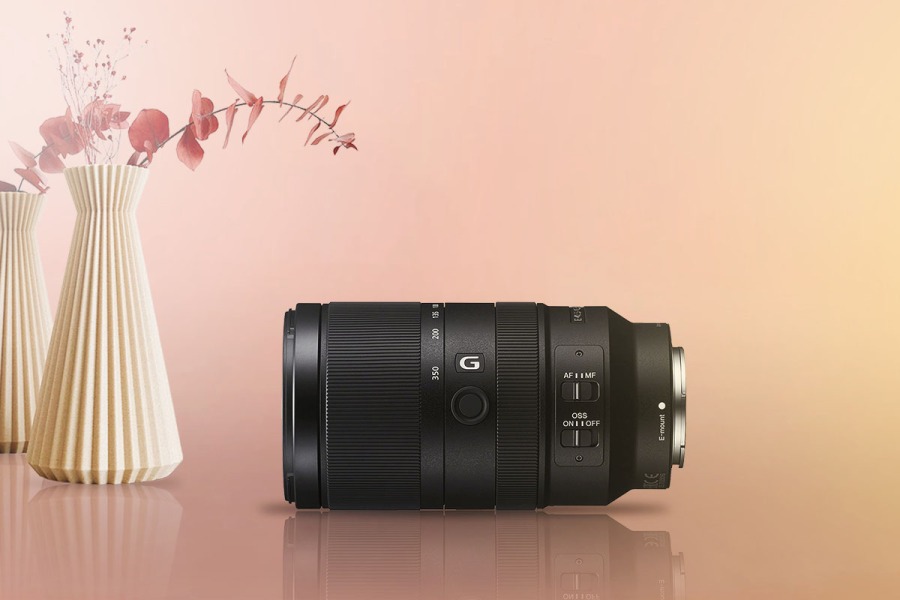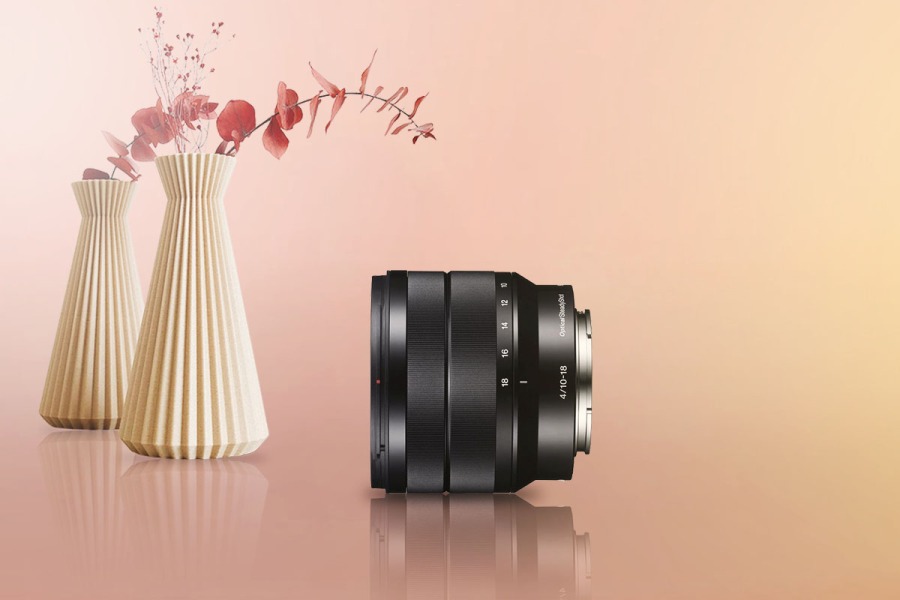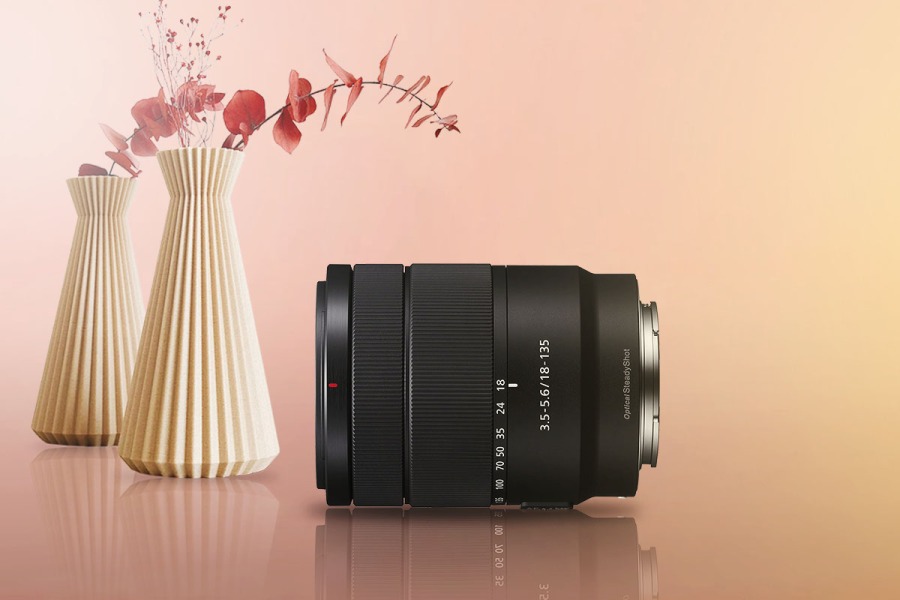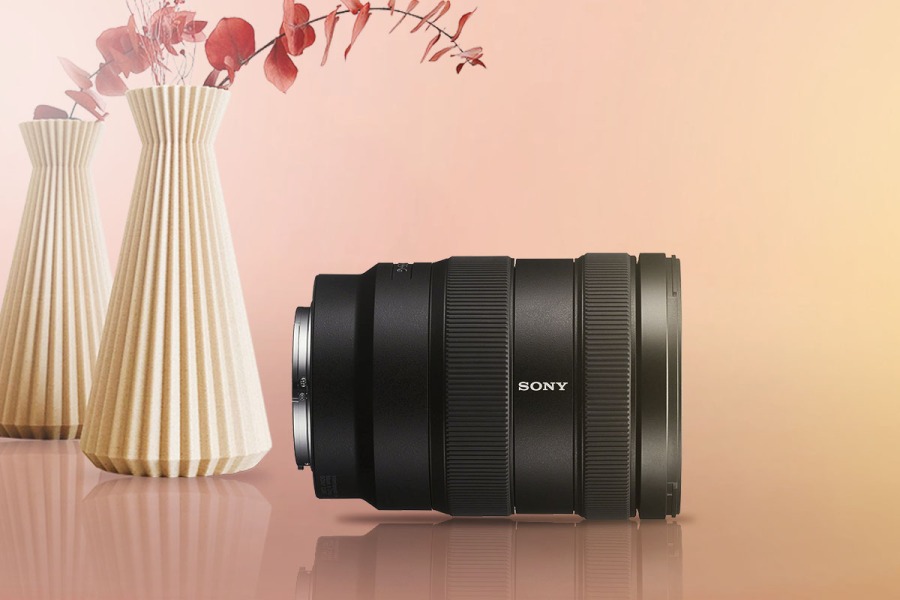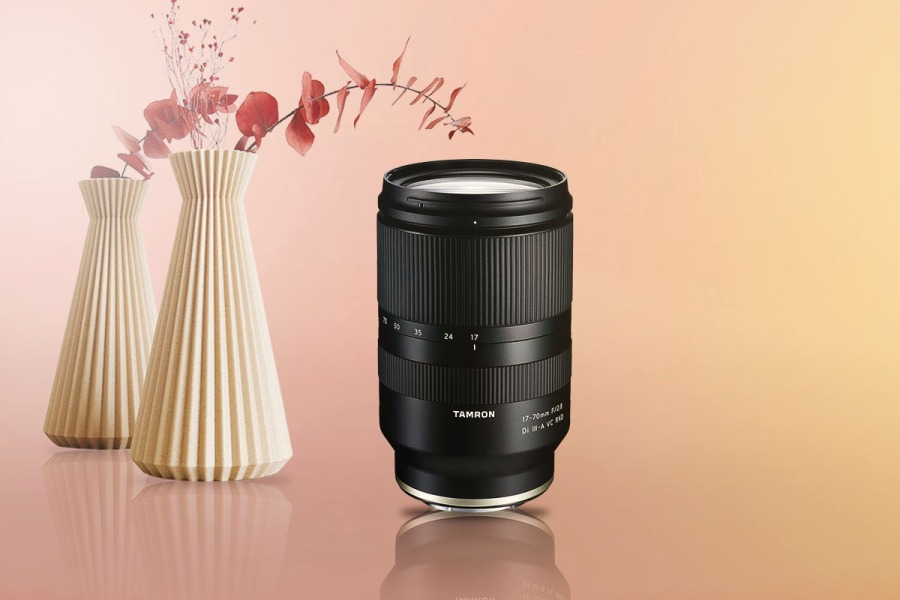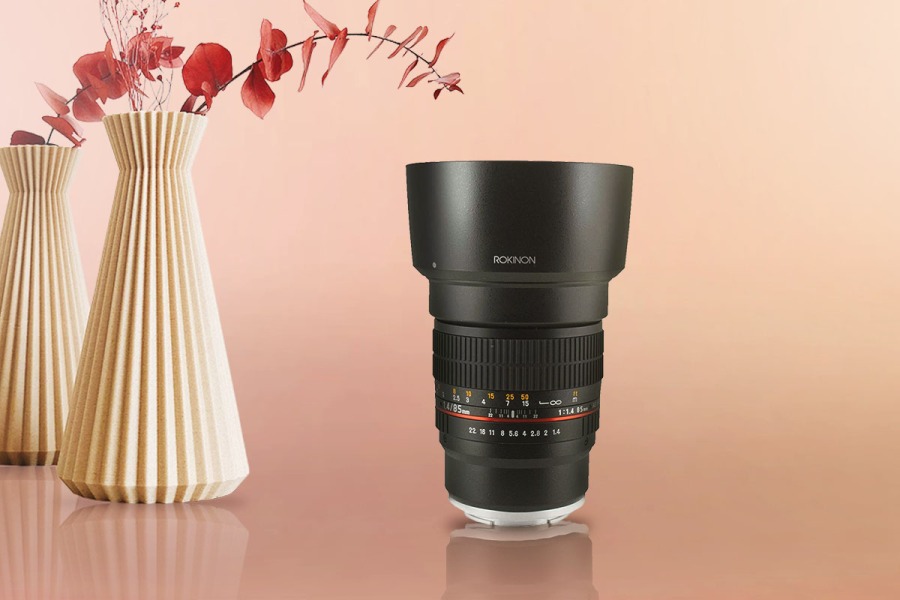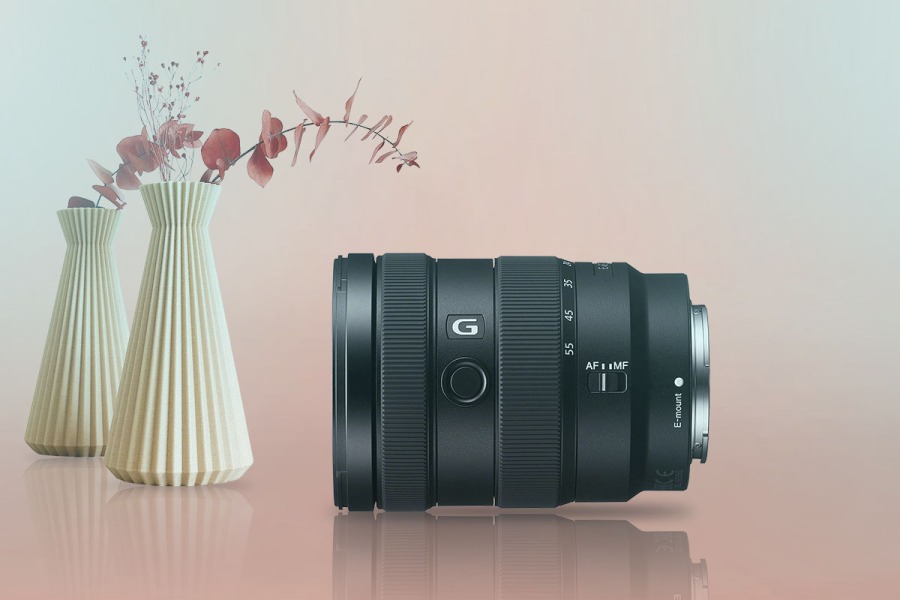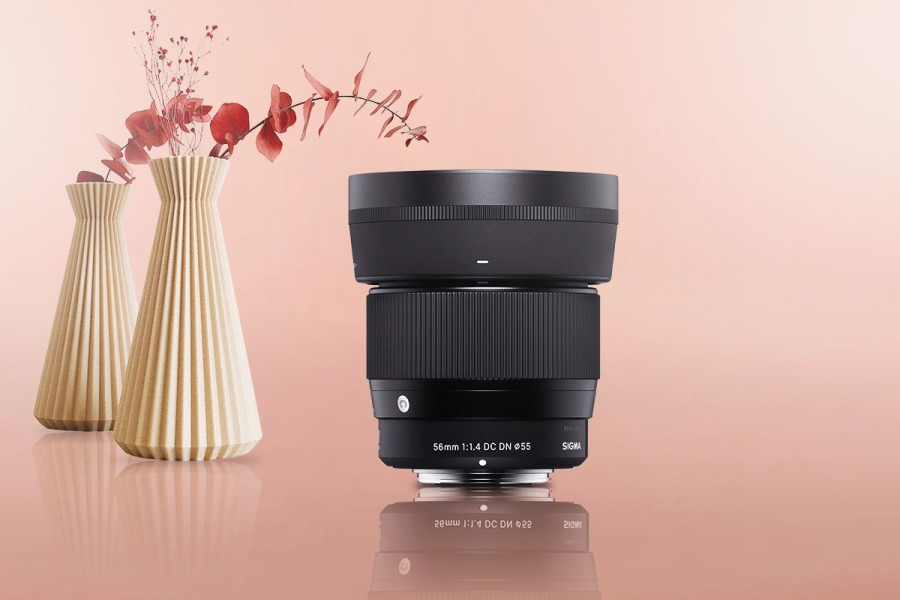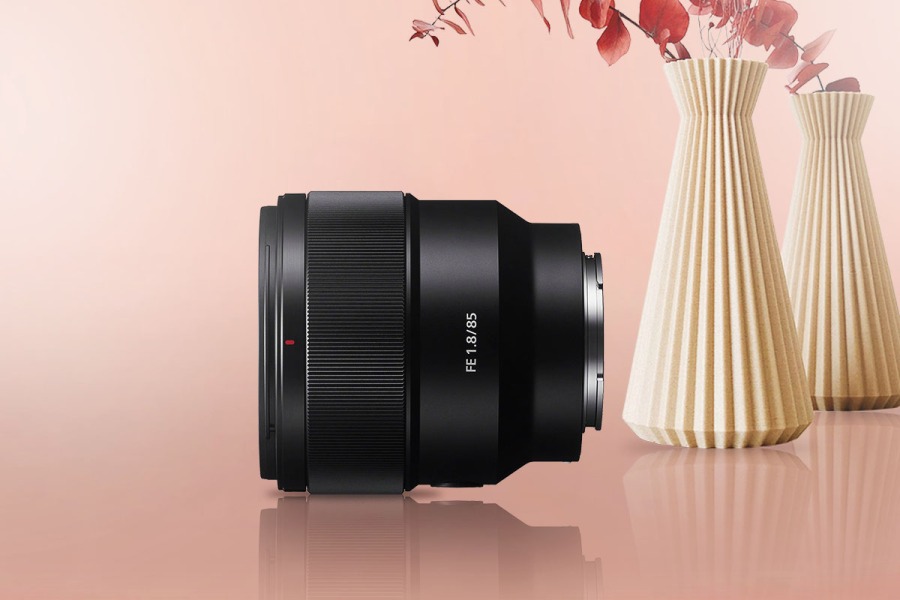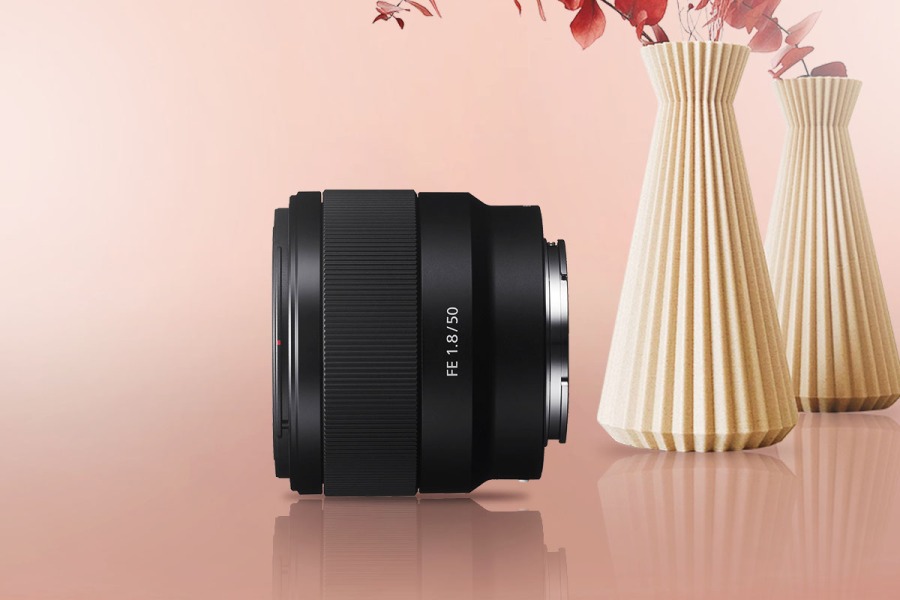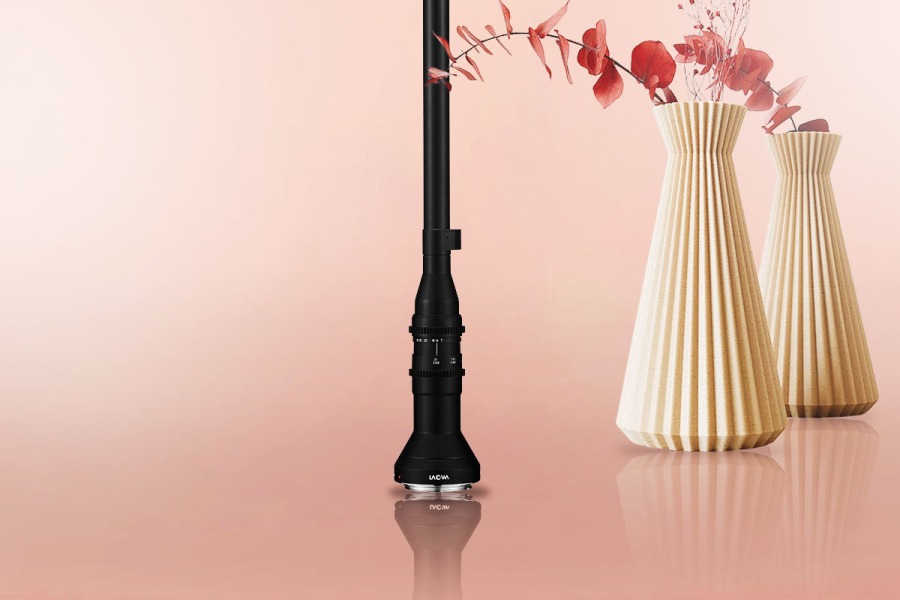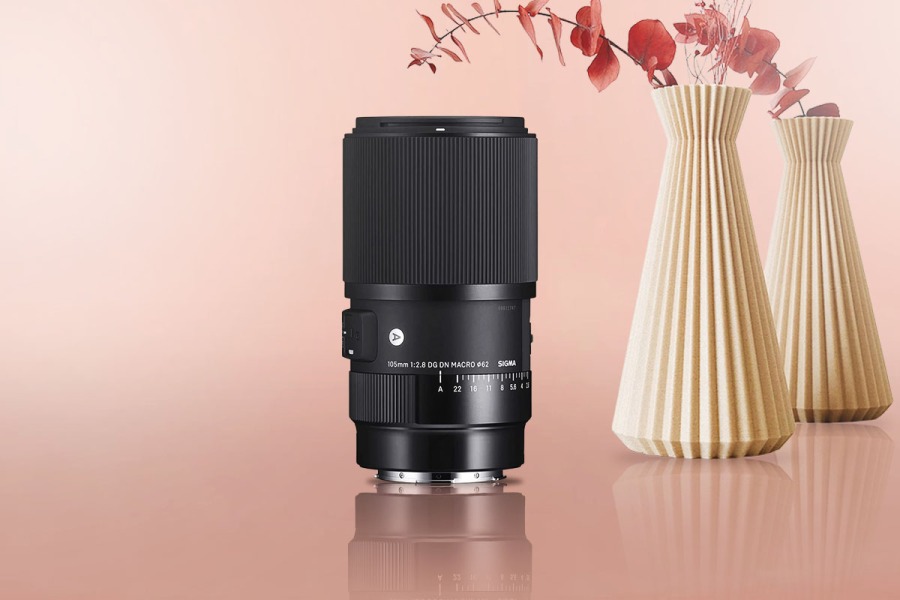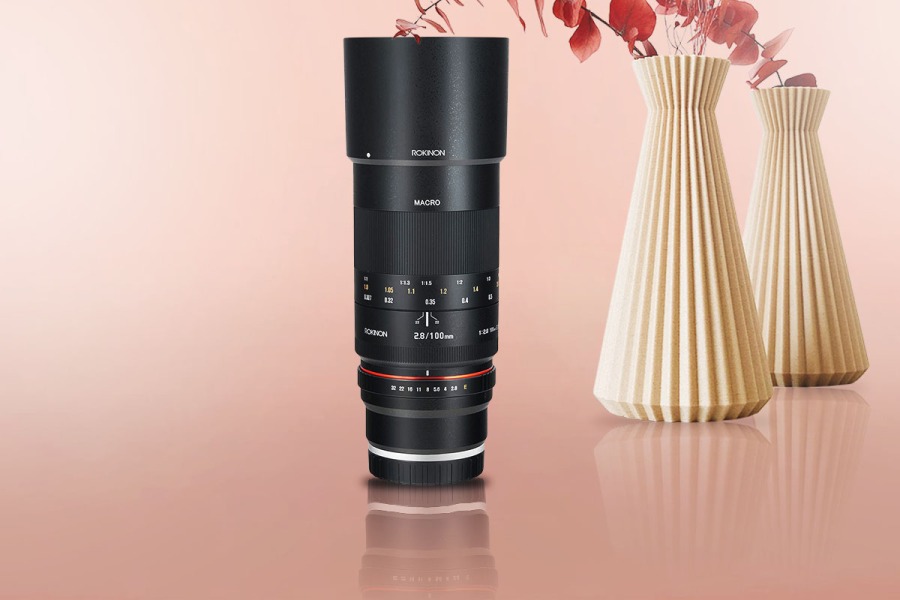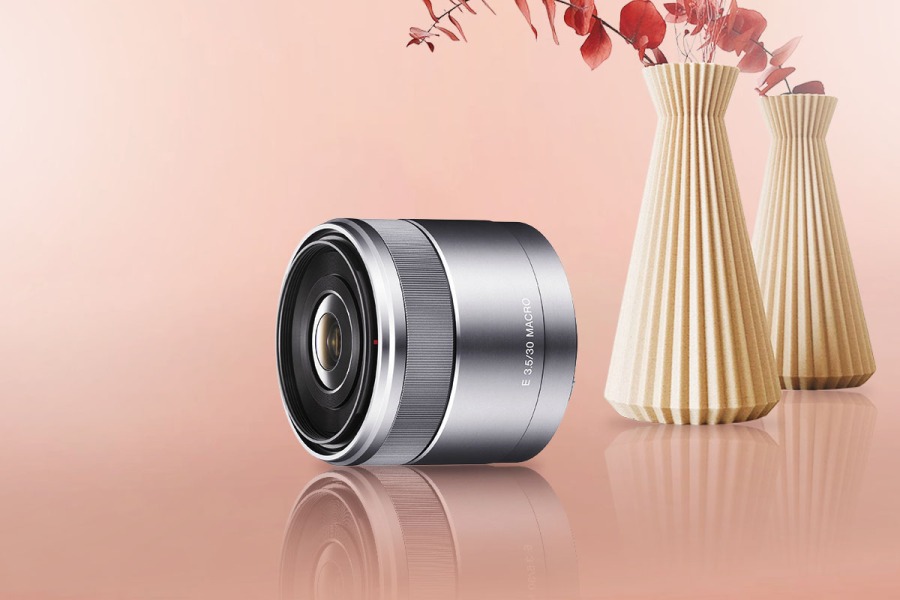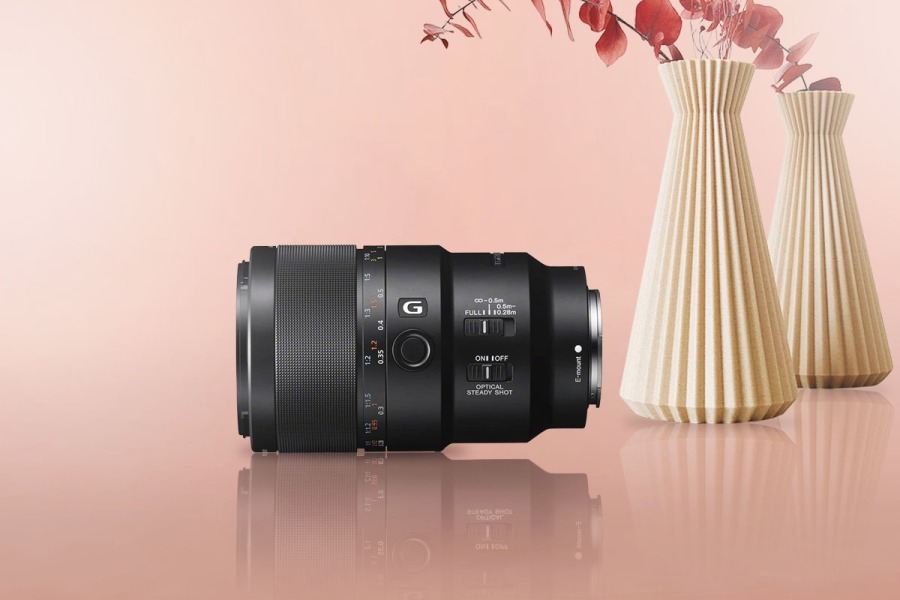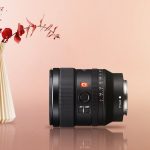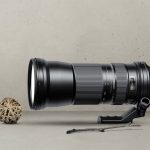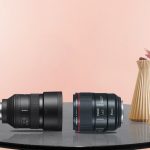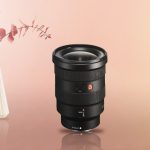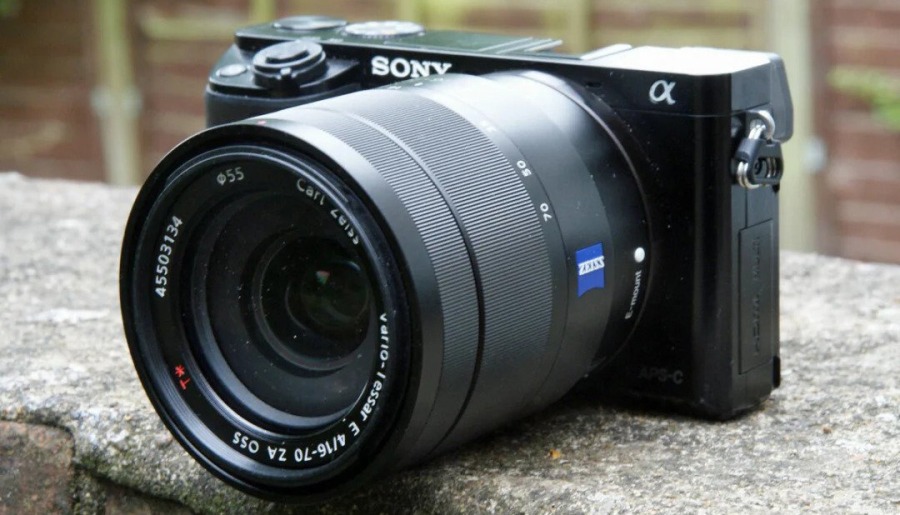
If you own a Sony A6000 and are looking to get a lens or a few lenses for it, then you’ve came to the right place. In this article, we will take a look at some of the best lenses for Sony a6000. Whether you’re looking for a wide-angle lens, a portrait lens, macro lens, zoom lens or anything else, we have a few picks for you.
Let’s not waste any more time and get right into it.
Skip To:
- Sony A6000 Wide Angle Lenses
- Sony A6000 Video Lenses
- Sony A6000 Wildlife Lenses
- Sony A6000 Travel Lenses
- Sony A6000 Zoom Lenses
- Sony A6000 Portrait Lenses
- Sony A6000 Macro Lenses
Best Wide Angle Lenses For Sony A6000
| Image | Product | Features | Price |
|---|---|---|---|
Best For Interior  | 10 | Check Price On Amazon | |
Best For Architectural Photographers  | 9 | Check Price On Amazon | |
Best for Aerial Videographers  | 8.6 | Check Price On Amazon | |
Most Versatile  | 8.5 | Check Price On Amazon | |
Best For Landscape Photographers 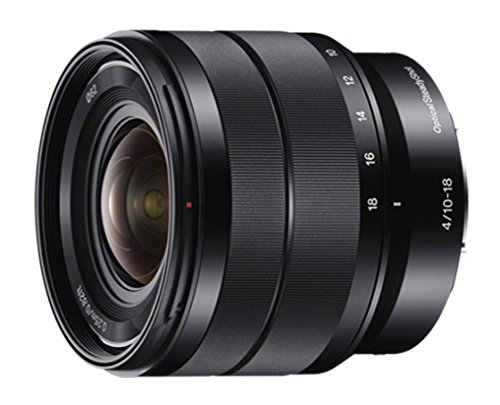 | 8.6 | Check Price On Amazon |
5. Rokinon 12mm F2.0 NCS CS – Best For Interior
The Rokinon 12mm F2.0 NCS CS is a great budget lens that won’t break in any way your bank account! Even though it comes at a cheaper price than the other lenses mentioned in the article below, it still has included features, and it works pretty great with the Sony a6000 camera. The viewing angle of this lens is 110°.
Design-wise, this lens comes with a shiny black look, measures 2.3 x 2.8 x 2.8 inches, and weighs 9.6 ounces. Based on the size and the weight, this lens definitely deserves a place in your traveling bag. It can be used with a 67mm filter, which is attached to the front part of the camera.
The focal length of this lens is fully fixed. A fixed focal length means that the lens doesn’t allow adjustments when it comes to zooming in or out. It stays in place. However, the focal length of this lens is 12mm. The focus that this lens has included works only manually; meaning that it needs to be adjusted while in use, and the minimum focusing distance is 7.9 inches.
The aperture of this Rokinon lens is quite fast and it works with a range from f/2.0 to f/22, meaning that it allows adjustment. On the lens is also included the Nano Crystal Coat which is a technology that fully reduces ghosting and flare. That really helps in sharp lights, as well as in low-light environments.
Pros
- Affordable
- Small and Lightweight
- Nano Crystal Coat
Cons
- No Automatic Focus
- Lacks Stabilization
4. Sigma 16mm f/1.4 DC DN – Best For Architectural Photographers
As you can notice, all the articles regarding the Sony a6000 camera have within this Sigma lens! What can we do, though! It really is one of the best lenses that you can find for Sony a6000. It is as well one of the most famous wide-angle lenses all over the world! As per the viewing angle of this one, it works at 83.2°.
As for the measurements and weight, this lens measures 3.6 x 2.8 x 2.8 inches and its weight is 14.42 ounces. It has a good build quality as well since it is made of super-durable materials, which make the lens one of the best long-lasting, plus, it is dustproof and splashproof.
When it comes to placement or the mounting, it is an amazing one because it stands in place quite well, with no movement at all. The filter that this Sigma lens uses is a 67mm one.
The focal length on this lens is also fixed, just as the other one already mentioned above.
Therefore, the focal length of this lens is 16mm. When it comes to focusing accuracy, it is the part where this lens can absolutely shine! Its focus is a Hybrid Autofocus, which is very fast, and it is able of tracking so that the subject that is already focused will not be defocused in any way. The minimum distance of focusing is 9.8 inches.
The aperture is a 9-blade circular one and it works on f/1.4 which allows you to deliver great quality images even in low-light environments. On the lens is also included the bokeh effect, but in my opinion, it should be definitely updated because it lacks some things.
Pros
- Durable, Splashproof and Dustproof
- Hybrid AF
- Great in Low Light
Cons
- Not Very Good Bokeh Effect
- No Image Stabilization
3. Laowa 9mm f/2.8 Zero-D – Best for Aerial Videographers.
Even though Laowa is not a very famous name, when it comes to lenses, I do assure you that it has amazing ones, and besides that, they work perfectly with the Sony a6000 camera! It is an ultra-wide-angle lens which is 113.5°. It is one of the lenses with the wide viewing angle in this article!
This Laowa lens measures 3.39 x 6.14 x 3.54 inches and weighs 7.58 ounces. It is made of durable materials so that it is a lens that could last for a pretty long time, even though it is not quite resistant for example when it comes to moisture or dust.
It for sure owns a filter attached in the front part and it is 49mm; meaning that it is the smallest one, compared to all of the lenses mentioned in this article.
The focal length in this lens is fixed as well, and it works only at 9mm. The focus in this lens works also manually, but still, I would like to claim that this one’s manual focus is more accurate than the Rokinon lens that I mentioned. The minimum focusing distance on this lens is 4.7 inches.
Since the focal length is fixed, this lens has an adjustable aperture. The minimum aperture range is f/22 while the maximum aperture works at f/2.8. As many of you may already know the f/2.8 of the aperture is one of the greatest ones when it comes to recording or taking pictures in places with low light.
Pros
- Well Build Quality
- Good Manual Focus
- Perfect in Low Light
Cons
- Lacks Resistance
2. Sony SELP18105G E PZ 18-105mm F4 G OSS – Most Versatile
This lens, differing from the other ones already mentioned above, is a lens that comes from the Sony brand itself; what could be better than a Sony lens for a Sony camera? This wide-angle lens from Sony is one of the best ones when it comes to video. The angle of view in this lens is 76° and 15°.
This lens measures 4.33 x 3.07 x 3.07 inches and has a weight of 15.04 ounces. It is a sturdy one based on the materials that it is made of, and when it comes to using it with the Sony a6000 camera, it stands in place even though it may feel like it is moving because the camera is quite small in size. The filter that this lens uses is a 72mm one.
The focal length of this Sony lens is adjustable, the minimum focal length is 18mm while the maximum one goes up at 105mm. Based on the focal length this lens also has an immersive focus ability. The focus is at its highest speed and it is very precise, especially if the subject is in a lot of movement. The minimum focus distance of this lens is 3.12ft and the magnification ratio is 0.11x.
As for the aperture of this lens, the minimum one is f/22 and the maximum aperture goes at f/4.0. I mentioned above that this lens is great when used while recording a video because this aperture brings the best of it. Therefore, the aperture is a 7-blade circular one, which brings an amazing bokeh effect during portraitures (portrait photography).
Also, this lens has within the OSS (Optical SteadyShot) for better stabilization during both pictures and videos.
Pros
- Magnification Ratio is Excellent
- Aperture is quite Good
- OSS Included + Bokeh Effect
Cons
- Somehow Big
1. Sony – E 10-18mm F4 OSS – Best For Landscape Photographers
Even though it is listed as the last one, it doesn’t mean that this lens is capable of doing fewer things than the other ones already mentioned! It is an amazing wide-angle zoom lens, which can be said that it is the best overall. The angles that this one captures images work at 109° and 76°.
This lens is quite small in size measuring only 2.52 x 2.76 x 2.76 and it is lightweight of just 7.9 ounces. It is considered a portable lens, which totally accompanies you wherever you go. This lens can be used with a polarizing filter of 62mm, which can easily filter out the glare that you may encounter during taking pictures.
The focal length of this amazing lens is also adjustable, and it works from 10mm as the minimum, and the maximum one is 18mm. The minimum focus distance on this one works at 0.82ft while the maximum magnification ratio works at 0.1x. However, the focus can also be used manually, with the settings that are found in the camera itself.
Considering the aperture that this lens works with, it brings amazing pictures with the smallest details. The minimum aperture is f/22 while the maximum one is f/4.0, which directly tells us that it has the same aperture as the other Sony lens mentioned before this one. Also, this one has a 7-blade circular aperture as well. The OSS feature on this lens is better than you could ever expect! It works amazingly for whatever you want to use it for. The shake is fully unnoticed!
Pros
- Portable
- No Glare
- OSS works Perfectly
Cons
- A Bit Pricey
- Not Resistant
Sony A6000 Wide-Angle Lens Buying Guide
What is a wide-angle lens?
Even though the name tells everything, a wide-angle lens, is a normal lens that has the ability to show you a bigger or wider field of view. As you can notice in the reviews about the products above I mentioned their viewing angles. All of them include a quite wide point of view. The wider the field of view (measured in degrees) the wider is the lens!
How many types of wide-angle lenses are out there?
Wide-Angle lenses come in three types! The ultra-wide-angle lenses, the wide-angle lenses, and the standard wide-angle lenses. The focal lengths under 16mm are considered ultra-wide. From 16mm to 24mm are considered normally wide-angles. Finally from 24mm to 35mm are considered standard wide-angle lenses.
How do the wide-angle lenses affect the photos or videos?
Wide-Angle lenses bring to you great images as already mentioned. Still, these types of lenses are better to use when taking pictures of subjects that are nearby. They help you capture great interesting pictures with an exaggerated perspective or point of view. The way they affect is that the picture you took or you are about to take looks way cooler than normally!
Are wide-angle lenses good for portraits?
Since these lenses have a wider point of view or field of view, they can as well be easily used when taking portrait pictures. Why Not? When using wide-angle lenses for portraiture can fully enhance the perspective of a picture.
Can all wide-angle lenses zoom in or out?
Not really! If you read the reviews about the products that I chose, you will notice that not all the lenses allow adjustments when it comes to the zoom feature. That is the same with all lenses, though. Some are fixed and do not allow you to zoom in or out.
When should I use a wide-angle lens?
This question is somehow the most important one! The usage of wide-angle lenses is not assured or only dedicated but here are listed some types of pictures in which you can use wide-angle lenses:
- Landscape Photography
- Architecture Photography
- Art Photography
- Street Photography
- Travel Photography
Best Video Lenses For Sony A6000
| Image | Product | Features | Price |
|---|---|---|---|
Best For Most People  | 10 | Check Price On Amazon | |
Best Compact  | 9 | Check Price On Amazon | |
Best High-End  | 8.6 | Check Price On Amazon | |
Best for Indoor Videography  | 8.5 | Check Price On Amazon | |
Most Versatile  | 8.6 | Check Price On Amazon |
5. Sony SEL1655G Alpha 16-55mm F2.8 G – Best For Most People
The first lens that appears in this article is the Sony SEL1655G Alpha 16-55mm F2.8 G. It is Sony’s most famous lens that comes with a high-end price, but still it has amazing features within.
The measurements of this lens’ size are 7.75 x 4.52 x 4.52 inches and the weight is 17.44 ounces. When it comes to the build quality, this lens is quite sturdily made, it is weather-sealed; meaning that you can use the lens easily and without any worry in any weather condition.
When it comes to the filter that is attached to the front part of the lens, it is a 67mm filter. The lens also owns a Nano AR coating, which does the job perfectly well in order to minimize reflections and ghosting.
The minimum focal length of this Sony lens is 16mm and the maximum one goes up to 55mm. With this focal length, the camera is quite good when used to record videos, because it really brings out the best of it.
The focus on this lens works via the XD Linear Motor that is one of the most famous focus systems and makes the focus quite fast and super accurate in many ways. Considering the fact that we need this lens for video, its focus is great at tracking. It means that during recording once a subject is focused it stays there.
The aperture is a 9-blade circular one which works great combined with the bokeh effect that is mostly needed during portraiture. Still, the aperture range on this lens is defined as f/2.8; which means that you get more light into the camera.
Pros
- Well Built
- Nano AR Coating
- Accurate Tracking Focus
Cons
- Pricey
- No Stabilization
4. Sigma 16mm f/1.4 DC DN – Best Compact
Sigma is a quite well-known name when it comes to different types of lenses. In this case, this Sigma lens is a contemporary lens that does an amazing job with the Sony a6000 camera, especially when in video recordings.
Design-wise, this lens measures 3.6 x 2.8 x 2.8 inches; meaning that it is a small and very compact lens and also it is considered a portable one that can accompany you wherever. When it comes to the weight of this lens it is also lightweight my weighing only 14.24 ounces.
Once placed on your Sony a6000 it stays in its place quite well. The filter that is added to this lens is 67 millimeters, just as the one already mentioned above. This Sigma lens is fully dustproof and splashproof so that it can be used whenever you want.
The focal length of this lens is fully fixed. It only works on 16mm. The focus on the other hand is a Hybrid Autofocus, which is precise in the most perfect way possible.
It does a quite good job when it comes to video recordings because it is able to track, and also it is quite smooth while recording.
Aperture, as seen in the name of this lens works at f/1.4 and it is a 9-blade round aperture. The f/1.4 aperture stands as one of the largest apertures found in lenses. It means that the lens is able to deliver amazing video recordings even in the lowest light conditions or environments.
Pros
- Small and Lightweight
- Dustproof and Splashproof
- Hybrid AF
- Great in Low Light
Cons
- No OSS
- A Little Barrel Distortion
3. Sony SEL35F18 35mm f/1.8 – Best High-End
Sony SEL35F18 35mm f/1.8 is a prime fixed lens which means that it doesn’t allow to be zoomed in or out. Still, you don’t have to worry at all, because while using it for video recordings it will do its job perfectly well, and let me say that it also may surprise you in many ways!
As for the size and weight, this lens measures 1.77 x 2.48 x 2.48 inches and weighs 5.47 ounces. It is the smallest and the lightest in weight lens that you can ever find. Besides that, it has a very strong build quality in general, meaning that the lens is quite durable and a long-lasting one, even though it is not resistant to dust or moisture.
The filter that this lens owns is smaller than the ones already mentioned above because this one is 49mm but that’s normal because this one is a smaller lens as well.
As a prime fixed lens, the focal length that it works with is only 35mm, still, it has an amazing focus. The minimum focus distance is 0.99ft while the maximum magnification is 0.15x. It has a superb focus which is silent and works at its highest speed.
It is the best one and also the ideal one when it comes to shooting movies in general. The autofocus cannot be locked on any subject, but it allows adjustment; meaning that you can manually focus as well.
The maximum aperture of the Sony SEL35F18 lens works at f/1.8 which allows light to enter into the camera, in this case, Sony a6000, and it brings to you amazing video recordings while in low-light places. Besides that, this lens has built-in image stabilization and it is the OSS – Optical Steady Shot, which does its job perfectly when you record, since there is no blur apparent.
Pros
- Built-In Image Stabilization
- Delivers Sharp Videos
- High-Speed Focus
Cons
- Not Resistant
- Expensive for Some
2. Sony – E 10-18mm F4 OSS – Best for Indoor Videography
Sony – E 10-18mm F4 OSS is a wide-angle zoom lens, that helps you capture the best videos in the widest angles. The angles work from 76° up to 109° and your videos will look cooler than ever, of course regarding the other features that this lens includes.
With a small size of 2.52 x 2.76 x 2.76 inches and a lightweight of 7.94 ounces, this Sony lens is an amazing portable one that doesn’t take too much space if you want to put it in your traveling bag. However, there are no resistances included; meaning that you should be a little bit careful if you use it at places where there’s moisture or dust.
The filter of this lens measures 62mm and it is better if you use a polarizing one that filters out the glare, because it does accept it.
As for the focal length of this lens, the minimum one works at 10mm while the maximum one goes at 18mm. You can easily notice that there’s not a quite big number in between, but that’s because the lens is a wide-angle one.
The focus in this lens is internal, meaning that it is automatic and manual as well. The minimum focus distance is 0.82ft while the maximum magnification goes at 0.1x.
The aperture of this lens brings to you very detailed pictures and videos. The minimum aperture is f/22 and the maximum aperture is f/4. That can only mean one thing! The aperture is great enough to deliver amazing videos and all as mentioned, are fully detailed.
With the Optical SteadyShot that is found within the lens, your videos will be very sturdy with no shake in any way.
Pros
- Wide Angle of View
- No Glare when used with a Polarizing Filter
- Optical SteadyShot Stabilization
Cons
- Not Quite Accurate Focus
- Not Resistant
- In the Expensive Side
1. Sony SELP18105G E PZ 18-105mm F4 G OSS – Most Versatile
Sony SELP18105G E PZ 18-105mm F4 G OSS is the last but not the least lens, of course when it comes to the things that it includes within. This lens as you can notice comes also from Sony, it is an immersive one with great features, and its price tag is not quite expensive, but still, some people may find it a little bit expensive. For video, it can be considered as the best overall.
The Sony SELP18105G E PZ 18-105mm F4 G OSS measures 4.33 x 3.07 x 3.07 inches, weighs 15.04 ounces, and comes fully covered in black color. This lens is a little bit bigger than the others already mentioned above. But still, it is considered a portable one, once you find the bag that it could fit in. The filter that is put on in the front part should be no more than 72mm.
The focal length in this lens is immersive! Its minimum focal length is 18mm while the maximum focal length goes up high to 105mm. That is also related to the perfect focus, that the Sony brand included in this lens. It is very accurate, very fast, and super precise in any way possible. The minimum focusing distance is 3.12ft and the magnification ratio goes up high at 0.11x.
As long as aperture is concerned, this lens has a minimum aperture of f/22 while the maximum one works at f/4. F/4 aperture is the best aperture to be used while recording or taking pictures in medium lighting levels. OSS (Optical SteadyShot) cannot be missed in this impressive lens. For video, the OSS works perfectly! Sometimes your hands may be shaking, and this feature fully stops the shake that may be encountered while recording.
Pros
- Feature-Packed
- Great Focus
- Impressive Magnification Ratio
- Great Aperture for Video
Cons
- A bit Big and Bulky
Sony A6000 Video Lens Buying Guide

Aperture
Aperture is listed with the letter F and a number after it. As a word or as a definition, it tells us how much light can enter into the camera, from the lens. A lower number of the aperture shows that the lens allows you to take detailed pictures or videos even in very dark conditions, however, on the other hand, a higher number means that the lens is in a normal range and doesn’t work too good in low light.
Focal Length
The focal length of a lens is measured by millimeters and it defines or tells how many millimeters the lens can focus. There are a variety of choices in between lenses because lenses come with different focal lengths. As you can see the lenses mentioned above all have different focal lengths. It measures also the minimum focus distance as well as the magnification.
Price
Price is the most important thing that should be considered in everything! It is always one of the first things that catch a person’s eye, and that is more than normal. Lenses too, come with different prices, and some of them are really brought to the market with a premium price, for example, the Sony – FE 16-35mm F2.8 GM mentioned above which is listed as the best high-end. Therefore, the other lenses mentioned have normally reasonable price tags.
Stabilization of Image
There are some lenses that come with the Image Stabilization within, and also there are some cameras that own it. If in the name of the lens you will encounter the OSS; that means Optical Steady Shot which is one of the most famous stabilization that lenses own.
Size and Weight
We all know that the Sony a6000 is a mirrorless camera which is quite small in size. Well, that’s the reason why you should always consider the size and the weight of the lens regarding the best video lens for Sony a6000. You need a lens that first of all could fit, and it should have a size and weight that combines perfectly the lens with your Sony a6000 camera.
Build Quality
When lenses are not strong enough it is possible to fall off or even break off. Lenses are always made of sturdy and strong materials but still, the build quality is one of the most important things that you should consider, and that will definitely help you choose wisely when purchasing any lens, in this case, the best video lens for Sony a6000.
Best Wildlife Lenses For Sony A6000
| Image | Product | Features | Price |
|---|---|---|---|
Best Wide-Angle  | 10 | Check Price On Amazon | |
Best Macro  | 9 | Check Price On Amazon | |
Best Telephoto Close-Up  | 8.6 | Check Price On Amazon | |
Best Value  | 8.5 | Check Price On Amazon | |
Most Affoardable  | 8.6 | Check Price On Amazon | |
Best Prime Lens  | 8.2 | Check Price On Amazon | |
Best Overall  | 8 | Check Price On Amazon |
7. Sony FE 16-35mm f/2.8 GM – Best Wide-Angle
Let’s hit it off with, the Sony FE 16-35mm f/2.8 GM a lens that operates well excellent for both near and distant subjects. This lens has a wide-angle zoom of 16-35mm that captures bright and sharp wildlife shots.
The f/2.8, accompanied by high-end resolution, provides an excellent contrast of landscapes, for example, the tall trees you find in mother nature. You also get a nice bokeh effect by shooting at f/2.8. At this point, the lens will focus precisely on the near subjects and smooth out the background, making it blurry pleasing.
The two DDSSM (Direct Drive SSM) systems are installed in an accurate, rapid, and stealthy way that benefits the focus a lot. They open doors to shooting movies as well as stills. The Nano AR system promises to eliminate flare and annoying reflections without compromising the color contrast.
There’s also the 11-blade circular aperture that highly contributes to smoothing the bokeh texture. With all that being said the Sony FE 16-35mm f/2.8 GM is light and really compact, making him a great traveling companion for the wildlife “hunts”.
6. Sony FE 90mm f/2.8 Macro G OSS – Best Macro
Next, we spicing things up with a prime lens, the Sony FE 90mm f/2.8. The major selling point of the Sony FE 90mm f/2.8 Macro lens is its swift and really quiet autofocus, which lets you lock onto faraway subjects with accurate and absolute precision.
The 90mm wide-angle focus complements the fast shutter aperture of f/2.8 that also guarantees a gorgeous bokeh effect to portraits. The lens compact floating focus mechanism promises to maintain proper focus throughout all kinds of shots, no matter where you are or what you photograph.
Its fast auto/manual focus switch helps you shift the focus mode without losing time and of course the shot. Despite not being a macro lens it also captures impressive photos of small insects and functions perfectly at any working distance. The Focus Range Limiter selector can be set for near or far focusing, depending on what you taking picture of, so you can maximize the autofocus speed according to your shot.
It has a 9-blade circular aperture to contribute to great bokeh effects, an optical steady shot image stabilization for handheld shooting, and precise autofocus. While the minimum focus distance sits at 0.28 with a maximum magnification ratio of 1.0x.
5. Sony FE 24-240mm f/3.5-6.3 OSS – Best Telephoto Close-Up
Next, we have an ideal pick from Sony, the 24-240mm that will suit both indoor and outdoor shots. For wildlife, the Sony FE 24-240mm f/3.5-6.3 OSS is perfect for capturing subjects at a large distance in low light. The image stabilization Optical SteadyShot (OSS) rewards you with crisp and precise results when you use the lens to shoot night scenes.
The high resolution of the focal range, with an advanced linear motor, improves the focusing mechanism for swift, smooth control across the extended zoom range. The resolution is consistent with a versatile range of fast apertures f/3.5-5.6. Its 7-blade circular aperture will contribute on breathtaking bokeh pictures and as far as the distance goes it has a Minimum Focus Distance: 0.5 m-0.8 with a Maximum Magnification ratio of 0.27x.
This lens promises to provide a fully enjoyable experience without compromising the quality or result of the images.
4. Tamron 70-300mm F/4.5-6.3 Di III RXD – Best Value
Next, we have a lens from Tamon, which is designed and created for photographers of all skill levels to enjoy high-quality images in comfort and compact way. It is really lightweight, weighing 1.2 pounds.
With a high priority on reduced size and weight, Tamron decided to pack the aperture of F6.3 for this telephoto. While this new design maintains excellent strength it reduces the weight to around 68%.
It is made up of 15 elements in 10 groups with great Low Dispersion lens elements; that eliminate chromatic aberration. It has a minimum aperture of 32 millimeters while the maximum goes at 4.5 millimeters.
3. Sigma 100-400mm F-5.6.3 DG DN OS Sony E – Most Affoardable
Sigma gave us the chance to reach 400m focal range cheaply, with the Sigma 100-400mm F-5.6.3 DG DN OS Sony E. It is a relatively affordable telephoto zoom that is designed for Sony’s mirrorless cameras.
Besides the affordable price what makes the Sigma popular must be that they are relatively compact when compared to a type of lens like a 150-600mm or 200-600m. Besides that, it is quite well made using a mixture of premium materials like magnesium alloy and plastic.
It has a total of 22 elements of 16 groups and it includes special FLD and SLD glass. It is also optically stabilized and has a minimum focus distance of 122cm (44 inches) at a wide angle of 160cm (63 inches), with a max magnification of 0.71 as for threads it uses a 67mm filter.
2. Sony FE 400mm F2.8 GM OSS – Best Prime Lens
Next, we have a great prime lens that is billed as the ultimate one. If you can get past the painful price, this lens will deliver anything you need from low light wildlife photography to even sports.
Despite being a big telephoto lens, it is quite lightweight weighing in at only 6.38 lbs. The wide f2.8 max aperture maintains exposure and depth of field while allowing the maximum light for shooting in all conditions.
The lens focus group is driven by two XD linear motors that achieve high thrust and efficient autofocus operation. As for the smooth bokeh effect, you just defocus the image and it will use the built-in circular blade to provide the best one possible.
There’s also the image stabilization, OSS (Optical SteadyShot ) which is a really valuable feature in any lens.
Besides that, image stabilization is also a huge help in aiding AF precision. When you pay a high price you would expect great and high image quality and anything short of the performance would result in a failed product, right? Sony knew this obviously and did their best for the Sony FE 400mm F2.8 GM OSS to live up to its price.
1. Sony FE 200-600mm F5.6-6.3 G OSS – Best Overall
A must-have lens if you are into wildlife photography and own a Sony camera. Despite being large and somewhat long, the Sony FE 200-600mm F5.6-6.3 G OSS is quite compact and lightweight.
The G-series super telephoto zoom lens offers the perfect amount of zoom you need for outdoor/wildlife shooting. The critical 400-600mm focal length range is a thing you just can’t resist when taking shots of small objects from far away, for example, birds.
This bad boy has an aperture range of f/5.6-6.3 and also it features Extra-low Dispersion (ED); which suppresses all color distortion while maintaining high-level resolution at all focus points.
With the 11-blade circular aperture mechanism, you will have full creative control over the bokeh effect. It doesn’t stop here, it also contains Sony’s traditional innovative DDSSM that rewards fast and accurate focusing, guaranteeing you do not miss any shot.
Sony A6000 Wildlife Lens Buying Guide:

Recording animal behavior in the wild is not a walk in the park. It requires knowledge of the animals, technical camera skills – and tons of patience.
It is one of the most challenging fields of photography. It is a combination of landscape, portraiture, and action photography.
To ease things for you, I will share some tips that I got from my base knowledge and some hours of research.
Know Your Subject, Biography.
In order to know what’s unique and revealing make sure to know the basics of the animal’s lives, for example, what and when they eat, their survival, their family tree, how they move, etc.
But make sure you are stealthy and unobtrusive, the main point of wildlife photography is to see what the animal would be doing if you weren’t there at all.
Know Your Camera:
Well, this sounds so obvious, but there are a lot of photographers who lose out on capturing beautiful shots because they don’t know how to use their camera and start getting nervous.
Make sure you learn every single setting your camera has to offer, once you learn how to change your settings rapidly, you won’t miss a single shot.
It might take some time to fully master a camera or photography, but once you do there’s nothing stopping you from taking the best wildlife pictures.
Know Your Distance, Get Close/ Stay Away:
Well, this might sound ironic but try to get close to your subjects, although it is quite hard because it requires a lot of planning, attention, and study. With that being said, you don’t want to get close to a predator like a wolf or a lion, do you?
Anyway, most of the animals are not comfortable nor confident to be close to you, unless you put them in that situation. The perfect situation is when they don’t see you, but if they do do not make anything that will scare them off, just try to do it in a slow and gentle way (that’s what she said).
Jokes aside, Even though you need to be too close a distance to your subject, there are times you want to be as far away as possible, be it for the landscape shot, or mostly for your own safety.
Know Your Bokeh Effect:
The bokeh effect is one of the most powerful techniques and the favorite one among shooting wildlife.
Try to separate the subject from the background as much as you can, you can do this by using your telephoto lens to get to the eye-level of your subject, taking things personal and close(not with a Siberian tiger though, you don’t want to do that). This results in the subject being perfectly in the focus, while the background out of focus results into an aesthetic blurry background.
Know Your Autofocus:
You won’t be needing to use manual focus on wildlife photography, but what you will need is a continuous focus mode.
With continuous autofocus mode, the camera keeps the focus on the subject, basically, it projects all focus points on the animal and all that is left to do for you is to press the shutter button until you actually take a good shot.
This comes in handy especially if you shoot moving animals. But if it is some bird that “chills” on his branch or tree, you can use the manual focus to select the points on your own.
Best Travel Lenses For Sony A6000
| Image | Product | Features | Price |
|---|---|---|---|
Most Versatile  | 10 | Check Price On Amazon | |
Best For Landscape Photography  | 9 | Check Price On Amazon | |
Best For Astrophotography  | 8.6 | Check Price On Amazon | |
Best For Videography  | 8.5 | Check Price On Amazon | |
Best Overall  | 8.6 | Check Price On Amazon |
5.Tamron 17-70mm f/2.8 Di III-A VC RXD – Most Versatile
The first option on the list is a large aperture everyday zoom lens for Sony’s E-Mount APS-C mirrorless cameras. It is billed as fast, sharp, quiet, and compact; at the same time, this lens is extremely versatile and perfect for everyday and travel photography.
It was created in mind with a board zoom range that also provides great image quality thanks to its focal length of 17-70mm.
Besides being lightweight and compact for traveling, vloggers can also take advantage of its close working distance.
While it is by no means a macro lens, it does so well on copying the attributes of a macro lens; meaning it can focus fairly close. It features a minimum object distance of 0.19m at a wide angle of 0.39m.
It promises to maintain its large f2.8 maximum aperture even through entire zoom ranges, unlike some aperture lenses that get darker as you zoom in. Major selling points must be its performance in low light and the beautiful/ dreamy bokeh effect.
The Tamron 17-70mm includes 16 elements in 12 groups and has a moister-resistant construction also fluorine coating. As far as diaphragm blades go, they sit at 9 and also sports the stabilization of Tamron, Tamron Vibration Compensation.
Should You Buy it?
While it has some minor drawbacks, for the price it comes it doesn’t fail to deliver what we need. Also, we should be thankful since there aren’t many alternatives you can get at this price point that does the same.
Pros:
- Generous Zoom range
- Great Build Quality
- Well Priced
- Quiet autofocus, almost no breathing
Cons:
- A little bulky
- It shows some flare
- Only for Sony cameras
4. Sony 10-18mm F4 OSS – Best For Landscape Photography
Yet again we have a compact and lightweight lens, after all, that is what we are looking for right?
But the latter one comes from Sony and it pairs really well with Sony’s mirrorless cameras.
It is a lens that has a black finish and weighs only 7.9 ounces but sadly there’s no dust nor splash protection included; so be careful where you take it.
The Sony 10-18mm includes optical stabilization and has a 9.8 inches minimum distance focus despite not being a macro lens. Autofocus is really fast and makes it ideal for shooting in claustrophobic environments. However, it can struggle to focus accurately so always pay attention before you snap a picture.
It comes in 10 elements and 8 groups while having 7 blades. The sharpness in the center of the frame is excellent at f/4 aperture. However, the clarity towards the edges of the frames falls short. If you stop down the aperture to f/5.6 results in a great improvement in the sharpness aspect.
Also at 14mm the performance at maximum aperture drops off but stopping it down to f/8 will result in an improved and better sharpness.
Should You Buy It?
So long as you can understand its limitations, it is certainly one capable lens that can produce high quality images; even though it’s a shame that at this price point the maximum aperture between 14mm and 18mm isn’t up to the high standard I would expect.
Pros:
- Great build quality
- Offers good performance when stopped down
- Compact and Lightweight
Cons:
- Lackluster Performance
- Autofocus is not that accurate in low light and contrast.
3. Sony E-mount FE 24mm F1.4 GM – Best For Astrophotography
Next, we have a prime lens made from Sonys known G lineup. If you are into photography and know a few things about lenses. You should be well aware that only the worthy lenses from Sony get entitled to it.
It is a remarkably compact and lightweight lens that weighs as little as 445g. The lightweight design enhances portability and mobility thanks to the combination of two XA elements and the newly developed DDSSM AF system.
It is comprised of 10 groups with 13 elements that include three ED (extra-low dispersion ) elements. The f1.4 max aperture maintains exposure and a good depth of field, allowing you to isolate the subject from the background with excellent light-gathering capabilities.
If you change the aperture to defocus the areas out of the focal plane become blurred or what we call the bokeh effect.
That’s when the 11-blade circular aperture kicks in; it maximizes the bokeh effect, resulting in impressive images in which the subject stands out against the blurry background in a smooth way.
Should You Buy It?
Sony E-mount FE 24mm F1.4 GM has considered Sony’s a prime lens flagship that is very good at providing sharp image quality in close quarters and at the same time at long distances. It focuses quickly and in silence.
You will be hard-pressed to find better prime options than this one for your Sony A6000.
Pros:
- Great resolution and contrast
- Great Bokeh effect
- Well designed and sealed
Cons:
- A bit pricey
2. Sigma 24-70mm F2.8 DG DN – Best For Videography
Next, we have a really well-built, nicely designed lens that is very reasonably priced, the Sigma 24-70mm. The focal length range and the wide aperture combinations make this lens a great tool that will often be mounted on your camera.
This lens is an ideal choice for landscape and cityscape photography for every focal length that is available. As for the wide aperture, it is attractive for photographing the night sky with the 24mm length being the best choice.
Even though the Sigma is not optically stabilized, being aligned with the Art Line Sigmas Global Vision series, makes up for it. This lens meets optical performance and it will save you time since you won’t need much post-processing work due to its ability to deliver clean and breathtaking results.
The smooth and creamy bokeh effect really hit the nail in the head for landscape and street photography.
Should You Buy It:
It is a really affordable lens at this price point, way cheaper than the likes Sony provides, and that is what makes it a real steal.
Pros:
- Solidly built
- Greatly Priced
- Decent Autofocus
Cons:
- Corners are not that sharp at distances
- Not completely distortion-free
1. Sony 18-135mm F3.5-5.6 – Best Overall
Yet again another great portable lens makes it into the list. Often lenses are too big for compact and mirrorless cameras like the A6000. But that’s not the case with this lens that weighs as little as 300g.
Its excellent portability compliments the versatility of the focal range the Sony 18-135mm has in store. With a minimum, of 18mm and the maximum one sitting at a whopping 135m, each range will prove a great help in landscape and traveling photography.
It produces sharp images even when shooting at wide open 135mm while its autofocus is really accurate and fast. Also, there’s the in-built image stabilization that gives you the chance to shoot at a slower shutter speed without a blur and also it promises to keep your hand stable even when your hands aren’t.
The bokeh effect comes enhanced with a 7-blade circular aperture that delivers smooth and natural defocusing.
It is billed as having a class-leading close-up performance, despite not being a macro lens. It has a minimum focusing distance of 1.48 ft and a 0.29x maximum magnification that is ideal for telephoto and macro shots.
Should You Buy It:
Overall, it is a great lens that you should not miss on. Surprisingly enough, unlike the rest lenses from Sony’s this bad boy come at a price that won’t break the bank while being really portable and versatile.
Pros:
- Portable
- Inbuilt stabilization
- Really minimal distortion
- Nicely priced.
Cons:
- It is not weather sealed
- Has no rubberized control rings
Sony A6000 Travel Lens Buying Guide
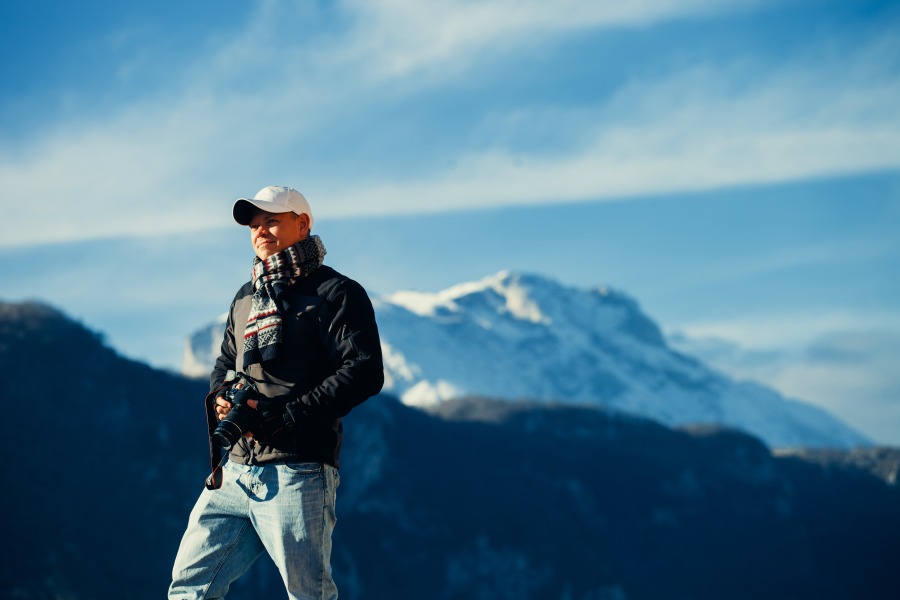
Your choice of lens is as crucial as your camera body. Please make sure to do your “homework” when searching for the perfect travel lens that will accompany you through your vlogging journeys.
If you like to travel at night, you should get a flash for Sony A6000, because you can’t rely on natural light during the night.
Also, make sure you don’t bring so many lenses with you and waste time swapping between lenses and ruining your traveling experience.
Zoom Lenses:
To avoid carrying around many lenses and swapping a group of them, a Zoom lens might be a great solution. Zoom lenses provide different focal lengths for you to select from. Basically, it will allow your camera to change smoothly from a long shot to a close-up or vice versa by varying the focal length.
Even though it won’t be as sharp as a prime lens that has a fixed focal length, still I think is a smart choice to do with a bit of compromise.
Prime Lenses:
Although I would opt for zoom lenses, It is worth mentioning Prime lenses too for people who prefer to have the sharpness and the clearness a fixed lens can provide. You already know the compromise by now, you will hurt your bank purchasing more lenses and will waste time on swapping in between.
Weight & Size:
Always make sure to pay attention to the weight of the lens. Although Sony A6000 is a compact and lightweight camera, the kit lens you will be carrying might put a strain on your body especially if you go hiking or something and you will be forced to drop some weight.
Bokeh Effect:
Well, we all love the bokeh effect, don’t we? Especially on travel/landscape photography. It is defined as the effect of a soft out-of-focus background that you get when shooting a subject. Simply put, it’s the blurry effect that gives that pleasing aesthetic feel.
Best Zoom Lenses For Sony A6000
| Image | Product | Features | Price |
|---|---|---|---|
Best Telephoto  | 10 | Check Price On Amazon | |
Best Wide-Angle  | 9 | Check Price On Amazon | |
Best Budget  | 8.6 | Check Price On Amazon | |
Best Premium  | 8.5 | Check Price On Amazon | |
Best Overall  | 8.6 | Check Price On Amazon |
5. Sony Alpha 70-350mm F4.5-6.3 G OSS – Best Telephoto
Sony Alpha 70-350mm F4.5-6.3 G OSS as listed is a telephoto zoom lens that works great with the Sony a6000 camera. It is quite sturdy and brings great features to the table. Let’s see what those features are!
This Sony lens comes in a size that measures 8.27 x 3.98 x 4.53 inches and its weight is 22.08 ounces. The color that it comes in is black, and it is easy to be used as well as easy to be mounted in the Sony a6000 camera. On the front part of the lens is attached a 67mm filter that minimizes the flare and ghosting. The lens also is dust and moisture resistant, so it is a great lens that can be used during outdoor photography.
The focal length of this lens, as already seen in the title, works in a minimum and a maximum length. The minimum is 70mm while the maximum goes up high to 350mm. With this focal length, you will be able to take great pictures all in high-quality.
With the XD Linear Motor packed in this lens, the focus is quite advanced and it is a real-time AF that can focus clearly and fast even the fastest moving subjects. Therefore, the focus can work automatically and manually letting you adjust it however you want.
The aperture range on the other hand is from f/4.5 to f/6.3. The aperture is a 7-blade circular and delivers to you a great bokeh effect. The bokeh effect means that the subject you are taking a picture of will be focused clearly while the surface or place that surrounds the subject will be totally blurred out. On this lens is also found a built-in Optical SteadyShot image stabilization that works amazingly.
Pros
- Delivers Great Images
- Amazing Bokeh Effect
- Great Focus Accuracy
- Optical SteadyShot
Cons
- Expensive
- A Bit Heavy
4. Sony – E 10-18mm F4 OSS – Best Wide-Angle
Sony – E 10-18mm F4 OSS is a wide-angle zoom lens that brings to you the widest angle possible. It works at 109 and 79 degrees. It is compatible with the Sony a6000 and with many other cameras! Let’s dive deeper into the details!
This wide-angle lens comes small in size by just measuring 2.52 x 2.76 x 2.76 inches and it weighs 7.9 ounces. It comes with a black finish and it is an E-Mount lens, meaning that it can be easily put on different Sony mirrorless cameras especially on Sony a6000.
The lens works with screw-in filters that are 62mm and they are changeable. The filter thread that is located in the front part of the lens cannot be rotated, and it is better if you are using a polarizing filter (fully filters out the glare).
When it comes to the focal length of this lens, it works from 10mm as the minimum length and the maximum focal length is 18mm. The focus works fully automatically and cannot be adjusted, still, it is fast and precise on whatever you need it for.
The minimum distance of the focus is 0.82 ft while its maximum magnification ratio works at 0.1x. This lens is well-known when it comes to landscape photography because it captures amazing pictures.
You will be able to capture amazing images brought in detail because of the aperture that the lens works with. The minimum aperture is f/22 and the maximum aperture is f/4.0. The aperture is a 7-blade circular one that brings the bokeh effect which is not perfect but still, does its job well when needed.
Also, the Sony – E 10-18mm F4 OSS has the built-in Optical SteadyShot for an immersive stabilization of the image in general.
Pros
- Small and Lightweight
- Great for Landscape Pictures
- Changeable Filters
Cons
- Not Resistant
- Bokeh Effect could be Better
3. Sony 18-135mm F3.5-5.6 OSS – Best Budget
Here comes another Sony lens the Sony 18-135mm F3.5-5.6 OSS. Differing from all the lenses mentioned in this article, this one comes at a cheaper price than any one of them. Even though it is cheaper, it doesn’t mean that it doesn’t bring good things to the table!
This Sony lens measures 2.75 x 3.5 x 0.03 inches and it weighs 11.5 ounces. It comes in a black matte finish and also it comes with a hood that can be attached to the front part of the lens. While we are there, at the front part, there is added a 55mm filter. All in all, when it comes to the build quality the lens is quite sturdy made of polycarbonate.
On this lens, the minimum focal length is 18mm while the maximum focal length goes up high to 135mm. The focus is quite fast and very accurate for any subject, especially with those that are moving quickly. Once a subject is focused, the AF system tracks and there’s not found any issue with it.
The focus allows adjustments, meaning that you could easily switch between automatic or manual focus, with the switch that is found on the side part of the lens. The minimum focus distance is 1.48ft and the highest magnification is 7.5x.
As its aperture range is concerned, this lens has a range of f/3.5 t f/5.6. It is also a 7-blade circular aperture, which doesn’t show too much of the world around your subject, but it is only focused on the subject that you are taking a picture of (bokeh effect). When you use this lens, you will notice that there’s an amazing stabilization. For that is responsible the one and only Optical SteadyShot!
Pros
- Affordable
- Great Focus Accuracy
- Perfect Bokeh Effect
- Optical SteadyShot
Cons
- No Dust or Splash Resistant
- Not too Wide-Angles
2. Sony SEL1655G Alpha 16-55mm F2.8 G – Best Premium
Why is this lens listed and titled as the best premium? Well, with just a look at the price that it comes with, you will know the reason why! It is a lens that comes with a staggering high-end price tag, and staggering features as well!
This lens measures 7.75 x 4.52 x 4.52 inches and weighs 17.44 ounces. It is considered a lightweight lens with an amazingly solid and sturdy build in general. The lens includes a fluorine coating which is used in order to manage reflections and transmissions.
It is fully weather-sealed; meaning that it can stand any weather condition. As for the filter that it uses, it is a 67mm filter, added to the front part of the lens.
The minimum focal length of this lens is 16mm while the maximum focal length is 55mm. There is included an amazing focus, which can be adjusted however you want, it works both manually and automatically by using the switch that is found on the side of the lens.
The minimum focusing distance works at 0.33mm while the maximum magnification ratio goes up to 0.2x. The focus works with an XD Linear Motor; makes the focus quite fast, quiet, precise, and also is able to track anything you want.
When it comes to aperture, this lens owns a constant f/2.8 aperture, it is a 9-blade circular one that is able to deliver amazing pictures and also an amazing bokeh effect, especially during portrait photography.
Pros
- Weather-Sealed + Solid Build
- Precise Focus
- Amazing Bokeh
Cons
- Super Expensive
- No Image Stabilization
1. Tamron 17-70mm f/2.8 Di III-A VC RXD – Best Overall
Tamron is a brand that is only in charge of lenses! They bring amazing products to the market and most of them are very popular ones. In the group of those popular/famous products stands the Tamron 17-70mm f/2.8 Di III-A VC RXD, it is the world’s first 17-70mm, as also its stands as the best overall in this article!
Coming in a black finish, this lens measures 4.7 x 2.94 x 2.94 inches and weighs 19.2. It is quite easy to be used lens and also it can easily be put on any mirrorless camera. It is made of polycarbonate materials, and also it is a durable lens, considering the fact that it is dust and moisture resistant so that it can be used whenever and wherever you want. When it comes to the filter that is attached to the front part, it measures 67mm.
The focal length of this Tamron lens is as seen divided, the minimum focal length is 17mm and the maximum focal length works at 70m. Based on the focal length this lens is amazingly used during portrait photography, landscape, and even macro shots, being also the most versatile lens overall.
The focus of the lens is quite accurate and fast. The only thing that in a way is a drawback in this lens is that the focus is only controlled over the settings that are found in the camera.
On this lens is added a 9-blade rounded aperture which works with a maximum f/2.8 and with this excellent aperture you will be able to shoot amazing pictures in low light environments, and also it includes an immersive bokeh effect for a better focus on the subject that you are taking a picture of.
The image stabilization of this lens is Tamron’s VC- Vibration Compensation, which means that during taking pictures with this lens the shake that may occur there will be fully unnoticed so that it provides better and clearer pictures.
Pros
- Versatile
- Amazing Bokeh and Pictures
- Vibration Compensation for no Shake
- Great Focus
Cons
- Big for Old Cameras
- Focus is Controlled in the Settings of the Camera
Best Portrait Lenses For Sony A6000
| Image | Product | Features | Price |
|---|---|---|---|
Best Budget  | 10 | Check Price On Amazon | |
Best High-End  | 9 | Check Price On Amazon | |
Best in Strong Lights  | 8.6 | Check Price On Amazon | |
Best for Close-Up Portraits  | 8.5 | Check Price On Amazon | |
Best Overall  | 8.6 | Check Price On Amazon |
5. Rokinon 85M-E 85mm F1.4 – Best Budget
Rokinon is a company that is around the world for more than 50 years now and it brings to the table many different lenses! They do a great job with them since they are compatible with many different cameras, in this case, as needed, with Sony a6000. This Rokinon lens is a telephoto lens, meaning it brings a narrower field of view.
When it comes to the look of this lens, it comes in black color, measures 2.95 x 3.07 x 3.07 inches, and weighs about 6.3 ounces. When it comes to the mounting, this lens is an E-Mount one and it would fit greatly your Sony a6000 camera. It is very easy to be placed.
The focal length of this lens is 85mm which means that the subject that you are taking a picture of fills more the frame. This focal length is known as one of the greatest when it comes to portrait photography, but still, it works also amazingly with landscape pictures.
The aperture range of this lens, on the other hand, is f/22 as the minimum whereas the maximum aperture is f/1.4. As long as the focus is concerned, this Rokinon lens has a manual focus that can be fully adjusted the way you want. It is also important to mention the filter size.
A filter is a transparent glass that is attached to the front part of the lens and in this one, the size of it is 72mm.
Pros
- Sturdy Construction
- The Aperture is Great
Cons
- No Autofocus
- No Bokeh Effect
4. Sony SEL1655G Alpha 16-55mm F2.8 G – Best High-End
As you can notice, this lens comes from the Sony brand itself and it is listed as the best high-end based on the price tag that it comes with. I always say that every high-end price of any product tells us that the product, in this case, the lens, comes with high-end features. This lens is a standard one; meaning it has a normal field of view.
The measurements of this lens are 7.75 x 4.52 x 4.52 inches and the weight is 1.09 pounds. As mentioned, it is a standard lens, and it is E-Mount, which means that it is a lens that is used in many different mirrorless cameras.
This Sony lens works with a minimum and a maximum focal length. The minimum focal length is 16mm while the maximum one goes up to 55mm. When taking portraits, this length does its job more than great.
The aperture range is f/2.8 and it is a 9-Blade circular aperture that works amazingly with the bokeh effect; meaning that the place that surrounds you will be totally blurred while the subject, in this case, the portrait of someone you are taking a picture of, will come in the clearest way possible.
The focus is fully automatic, it is very fast and super precise when it comes to subject tracking, once it is focused it stays quite sturdy on the subject and there will be no blur. On this lens, you will also notice a Nano AR Coating. Its job is to minimize reflections and ghosting, and also, bring better contrast and better color in general.
Pros
- Nano AR Coating
- Great Bokeh Effect
Cons
- Expensive
3. Sigma 56mm for E-Mount – Best in Strong Lights
Even though this lens doesn’t come from Sony, it really works amazingly with any type of Sony camera, especially with Sony a6000. The lens is a fixed prime lenses and that means it doesn’t allow you to zoom in or out during a photography session, or as we are mentioning right now during portrait pictures.
This lens measures 2.3 x 2.1 x 2.6 inches and weighs about 9.8 ounces. In general, it has compact built, and with its weight, it is considered an amazing lightweight lens that would be a great companion wherever you go.
The focal length of this lens is 56mm; an impressive length for portrait photography. It is the aperture of the lens that comes in two ways. The minimum one at f/16 and the maximum aperture range is f/1.4. It is bright enough to take amazing portraitures.
The lens is also amazing in low light as well as in the strongest light possible. On the lens is included a Super Multi-Layer Coating that has to do with the minimization of the flare and ghosting, and a specialty on this one is that it works amazingly in strong lighting environments.
It brings to you amazing pictures while in strong lights. There is also included a Hybrid AF, which works along with AF tracking and works fast and with an immersive accuracy. The filter size of this Sigma lens is 66.5mm.
Pros
- Affordable
- Well Build and Lightweight
- Perfect in Strong Lights
- Great Focus
Cons
- Not Very Resistant
- No Image Stabilization
2. SONY 85MM F1.8 – Best for Close-Up Portraits
Here goes another lens from Sony itself, and it is more than understood that it works pretty well with the camera that we need, the Sony a6000. It is a medium telephoto lens with a field of view around ten up to thirty degrees. As titled, the lens is great when it comes to close-up portraits since it helps you bring the best of it.
The whole body of this lens measures 4.49 x 3.82 x 4.69 inches and the weight is 12.96 ounces. A specialty on the build of this lens is that the materials that it is made of, are quite strong and quite durable. It is a lens that easily resists dust and moisture so that you don’t have to worry at all about this issue.
In the name of this lens is only mentioned one measurement, that of 85mm. It is directly linked and related to the focal length that it has. It is 85mm and it is one of the best focal lengths that we need, of course for portraiture. There’s also found quite wide portraiture of f/1.8 and it comes also in 9-blade.
It is amazing if you want to take close-up portraits with a bokeh effect. The bokeh effect in this lens works pretty well. The focus works with a double linear motor system; making the focus very precise in any way possible. The filter size on the other hand is 67mm.
Pros
- Greatly Build
- Dust and Moisture Resistant
Cons
- A Bit Big
1. Sony – FE 50mm F1.8 – Best Overall
This lens from Sony is considered a budget one when it comes to the price. Sony – FE 50mm F1.8 is a standard lens that Sony created to work amazingly with the famous Sony a6000 camera.
Being a standard lens it is related to the field view. If you need an overall opinion, I would like to say that with the features that the lens has within, it is listed as the best overall. Of course when it comes to portraits.
The build of quality of this lens is dependent on the amazing materials that it is made of. It includes mostly metal which is one of the strongest materials that can be used in a lens. The measurements are 4.09 x 3.4 x 4.69 inches and the weight is 6.60 ounces. It is super compact, lightweight, and it can be easily be carried around wherever your photo session is.
The focal length of this lens is adjusted from the minimum which is 35mm and the maximum focal length is 75mm. In general, for portrait pictures, it works perfectly fine with the 50mm focal length.
The maximum aperture works at f/1.8 and it is great in any light, especially, you don’t have to worry if you are taking pictures in low light because it works quite well; delivering you quite great pictures.
The bokeh effect is immersive and perfect! It is brought to you via the 7-blade circular aperture. The focus in general works well, it is precise, but unfortunately, it is a little bit slow.
Pros
- Easy to Carry
- Brings Great Image Quality + Amazing Bokeh Effect
- Great Price Tag
Cons
- The Focus could be Faster
Sony A6000 Portrait Lens Buying Guide
Bokeh Effect
This type of effect is one of the most famous, that nowadays is even added on smartphones! If any of you doesn’t know what that means, the Bokeh Effect when taking portrait pictures allows the subject to be focused and the surface or the background will be fully in a blur.
Speed
With the word speed of lenses we refer to how much light is passing through the lens while you are taking a picture, in this case, portraiture. The speed of the lens is related to the aperture and the focus. (both mentioned below)
Aperture
The aperture is the opening of the diaphragm of the lens, in between which the light passes. When the aperture is higher, it means that less light is entering into the camera, when it is lower, there is more light passing through.
Focus
During portraiture, the focus is one of the most important things. It is better if the focus of the lens goes automatically to the face of the person, that you are taking a picture of.
Best Macro Lenses For Sony A6000
| Image | Product | Features | Price |
|---|---|---|---|
Best Premium  | 10 | Check Price On Amazon | |
Best Value  | 9 | Check Price On Amazon | |
Best Mid-Range  | 8.6 | Check Price On Amazon | |
Best Compact  | 8.5 | Check Price On Amazon | |
Best Overall  | 8.6 | Check Price On Amazon |
5. Venus Laowa 24mm f/14 2X – Best Premium
Starting right away with a premium lens, the Laowa 24mm. Laowa is one expensive lens but thanks to its uniqueness it makes up for it. While macro photography is mostly about flowers and insect shots, Lowa is used for some other different cases, as well.
For example, you know when you see the camera sliding between the covers of a book, or if you have seen shots of a bottle spinning while its interior is being recorded, this is the lens you use for that kind of content. What’s more, the tip of the lens is waterproof, meaning it can record the water inside of a bottle.
Unlike traditional macro lenses, the Venus Laowa 24mm is designed like a proboscis of a honeybee. It is a 16inch rod lens that will take a macro shot of almost anything, its performance is something you would expect for this price point.
It houses 27 elements in 19 groups and it packs a 7-bladed diaphragm. The aperture sits at a fixed length of F14, which indeed is small; but that’s the point of macro shooting.
Just note that the lens is manual focus, meaning you will need to set a focus distance before you begin.
Looking at its uncanny and long design tells us that it was specifically made for us to reach, hard-to-reach spots. Yet, it is portable for a long lens, weighing only 1.04 lb.
Should You Buy it?
While it is a very expensive lens, you will find nothing like the Venus Laowa 24mm f/14 2X; no doubt that it will take your macro photography to the next level.
Pros:
- Great Design
- LED ring
- Lightweight
- 2x Magnification
Cons:
- Aperture is a bit small
- It serves only as a macro lens.
- Painful Price
4. Sigma 105mm F2.8 DG DN – Best Value
Making it more wallet-friendly with the next option, the Sigma 105mm F2.8 DG DN. A great macro lens that is built just for a mirrorless camera system with the support of a life-size subject and excellent construction.
The nearest focus distance this bad boy can achieve is 11.6” and it projects a life-size (1:1) image subject into the camera sensor. It has enough distance to avoid casting a shadow or ruining what you photograph in general.
It comes with a Hyper Sonic Motor (HSM), that is not completely quiet, you can hear breathing there and then, however, it is really accurate and fast.
Also, it has a relatively wide aperture ring, that can also be set in a 1/3rd stop. A great thing that I like about this aperture ring is that there’s a switch, that can be made clickless, making it ideal if you want to film small objects.
Should You Buy It:
It is a great macro lens for an L-Mount, it provides exceptionally sharp and reliable autofocus, that will prove huge help in macro photography, be it in the field and studio alike.
Pros:
- 1:1 macro reproduction
- Great and quick autofocus
- Great build
Cons:
- Focus breathing
- No image stabilization
3. Rokinon 100mm F2.8 ED UMC – Best Mid-Range
Moving forward, we have what we can consider a mid-range option, that is quite similar to high-end lenses in the performance aspect, the Rokinon 100mm. While it has a reasonably good focal length it doesn’t feature OSS or AF, yet it doesn’t compromise on image quality.
It has a minimum focus distance of 1 foot and a standardized reproduction ratio of 1.1, which proves that this is a true macro lens. Thanks to the long focal length and large aperture the out-of-focus areas have a wonderful bokeh effect that looks blurry clean.
The 5.87 lens houses 15 elements in 12 groups while sporting 9 rounded diaphragm blades. The manual focus lens might cause some trouble on moving objects but will keep it tidy on static objects.
What makes this lens more special than the competition is the sharpness and the great quality of the images it captures.
It is a bit on the heavy side weighing at 1.61 lbs, once you put it on your A6000 you will feel the weight after long periods of shooting, but is something you need to accept if you want a flagship tier lens at half the price.
Should You Buy It?
Besides lacking OIS and AF, everything else is great about this lens, just note this doesn’t come at a budget price, it is more of a high-mid price range, yet compared to some premium prices out there, it delivers what they do with just a few drawbacks.
Pros:
- Great aperture
- Splendid Image Quality
- Nicely priced for the value it brings
Cons:
- Quite Heavy
- No AF and OIS
2. Sony SEL30M35 30mm f/3.5 e-mount – Best Compact
Next, we have a cheap, compact, and lightweight macro lens that is known for its minimum focus distance.
It has a minimum focus distance of 3.7” and a 30 mm focal length. With that being said you can tell that the SEL30M35 wants to take things close and personal. It houses 7 elements in 6 groups, an F3.5 aperture with a 7-bladed diaphragm. Aperture might be lower than what you get on most macro lenses, but it is understandable for the price it comes with.
Sadly it also lacks stabilization, but it features great autofocus capabilities that make up for it. The killer feature is the ability to focus as close as 3.74”, you will see your subjects really close and in a lot of details.
It is a bit polite, or say soft for general purpose photography, which I think is perfectly fine and won’t bother many people, after all, you take it for macro photography and not as an all-rounder.
It weighs as little as 0.3 lb, you won’t even notice it on your camera. Just don’t forget that you have it placed in your kit lens, in case you find the perfect opportunity for a macro shot.
Should You buy it?
It is a bit polite or say soft for general purpose photography, which I think is a great compromise for the compact form factor and won’t bother many people, after all, you take it for macro photography and not an all-rounder.
Pros:
- Really light and compact
- Great autofocus
- Unbeatable focus distance
- Quite cheap
Cons:
- Aperture is small for a macro lens
- No optical image stabilization
1. Sony FE 90 mm f/2.8 Macro G OSS – Best Overall
With this pick, I can confidently seal the whole list, the Sony FE 90 mm has to be the best macro lens for Sony A6000. Indeed, it comes with a price that is hard to swallow but it packs everything you need or looks for on a good macro lens.
The G on its name means that it is a lens from the G line up, and Sony only entitles the highest quality lens they have with this “badge”. The image is as sharp as they come with an F2.8 aperture and with the 9 round-blades, the bokeh effect is really smooth and breathtaking.
It uses a 62 mm filter threat and measures at around 5 inches, which is a traditional lens, unlike the first mentioned option, which was a probe lens.
Its body houses 15 elements in 11 groups and there’s also the Nano AR coating that helps in reducing flare and ghosting.
What makes this lens ideal and a competition killer must be the fast autofocus motor; that is designed to let you quickly and easily switch between autofocus modes. It doesn’t stop here, there’s also the focus range limiter which speeds up the AF when working with moving subjects, say insects for example.
Should You Buy it?
Besides being on the heavy side, weighing 1.32 lbs, nothing else stops this lens from being an ideal pick and even the best overall in this list. If price is not something that bothers you, don’t hesitate on this bad boy.
Pros:
- Great aperture, F2.8
- Great Auto Focus features
- Optical image stabilization
Cons:
- Pricey
- A bit heavy
Sony a6000 Macro Lens Buying Guide
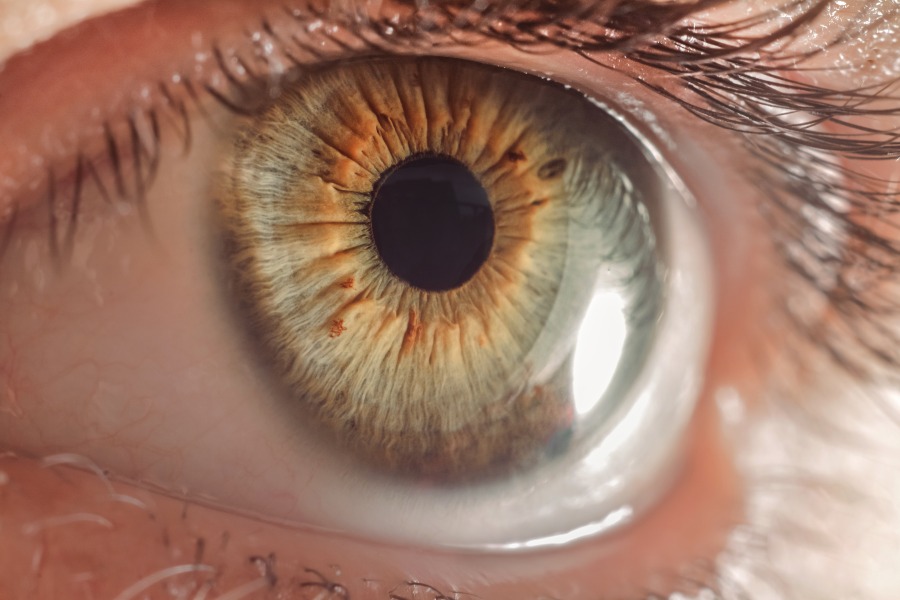
Macro Lens:
Basically, Macro leans means macro photography. The photography is an extreme close-up to the small objects and living organisms like insects and flowers. So if you ever wonder how a small object like an insect looks detailed and life-size, it is all thanks to the Macro Lens. A Macro lens has the ability to focus from infinity to 1:1 magnification; that means the size of the image in real life is the same size as it is reproduced on the camera sensor.
Macro Lens Vs Micro Lens:
Usually, both terms macro and micro refer to the same thing. The difference is the word meanings. Macro – something large, while micro means something small. As I explained above this photography style will let you fill most of the frame with the object being up close and in detail; in other words, you get a macro shot of a micro object.
While anyone can take a close-up picture with a telephoto lens, real macro photography can only be created by a real macro lens.
Frequently Asked Questions:
Is it acceptable to use a macro lens for regular photography?
Well yes, nothing wrong with that since most macro lenses are used for regular photography too, just beware of your lens though since some of them are specialized only for macro photography.
Can I use a macro lens to record videos?
Yes, you can, but you just need to be careful because of their design, they tend to show a lot of focus breathing, which is awful when recording. This can be a problem for professional photographers, as beginners might not be aware of it much.
Do I need a Tripod for macro photography?
Yes, a tripod is an essential tool. While a lot of cameras and lenses have built-in stability none of them can match the stability a tripod can offer.

Camera Tester & Reviewer
I spend most of my time taking photos & videos of everything in sight. Yes, I am a stock photographer and I’ve probably taken more than 700,000 photos so far.
